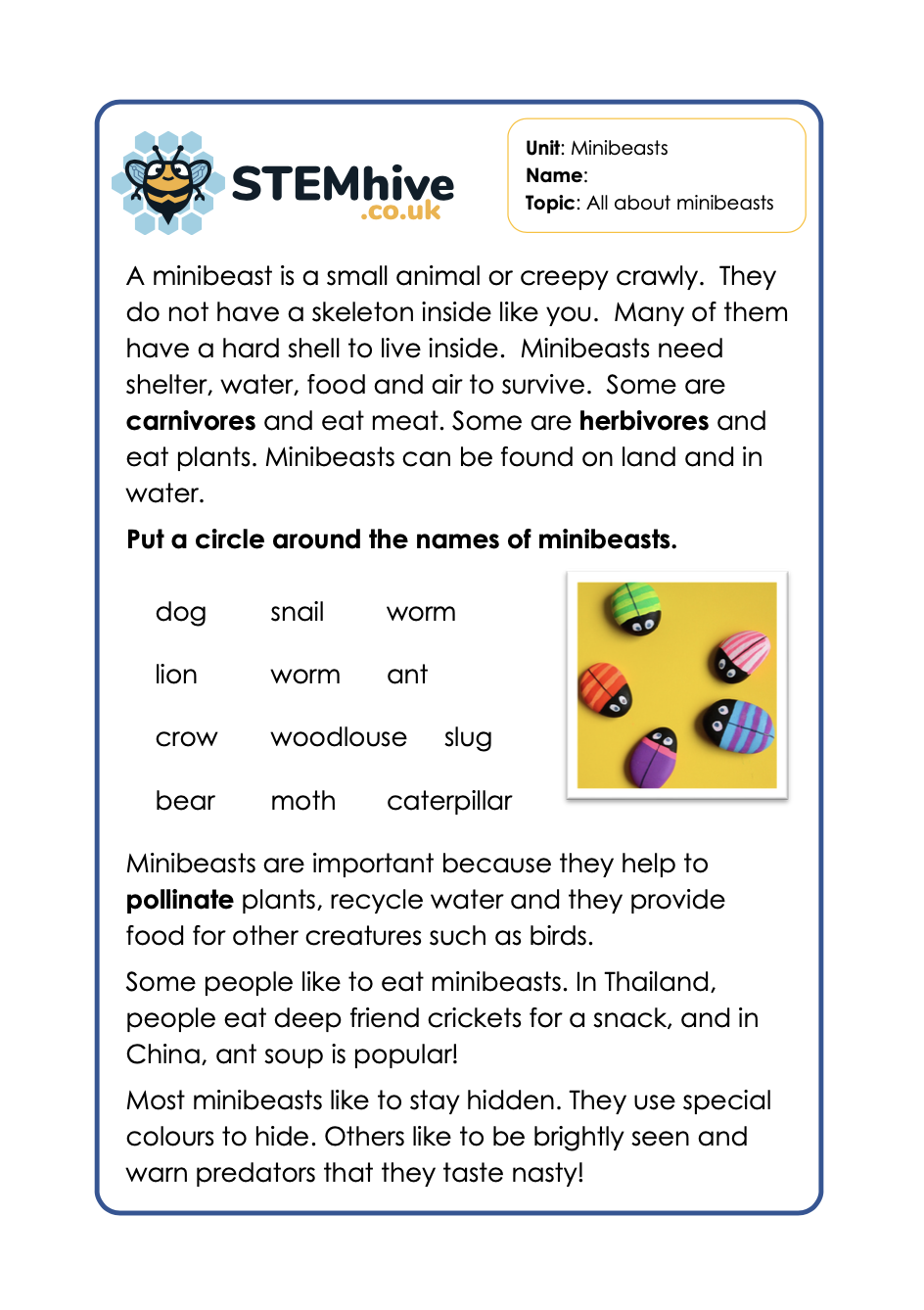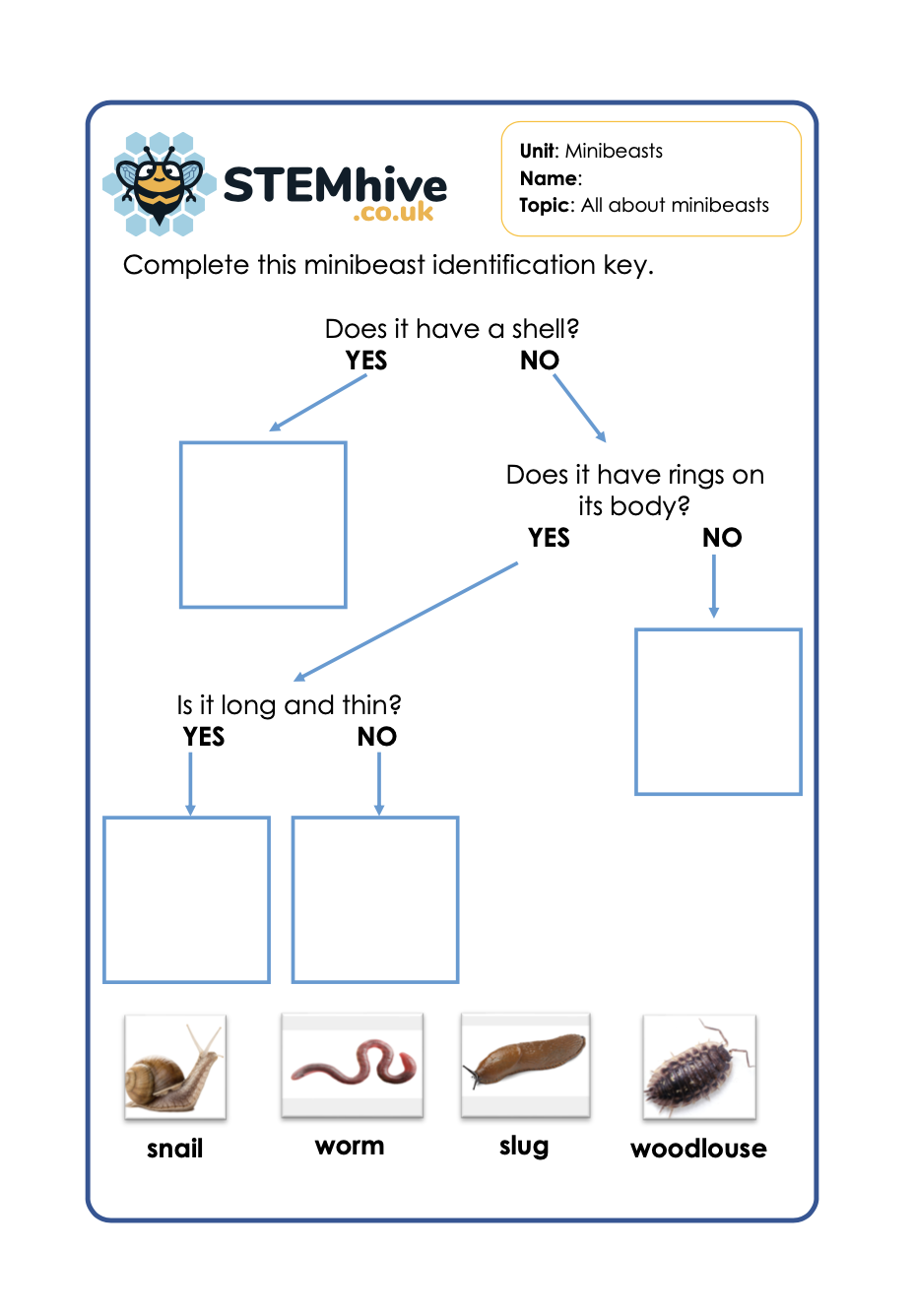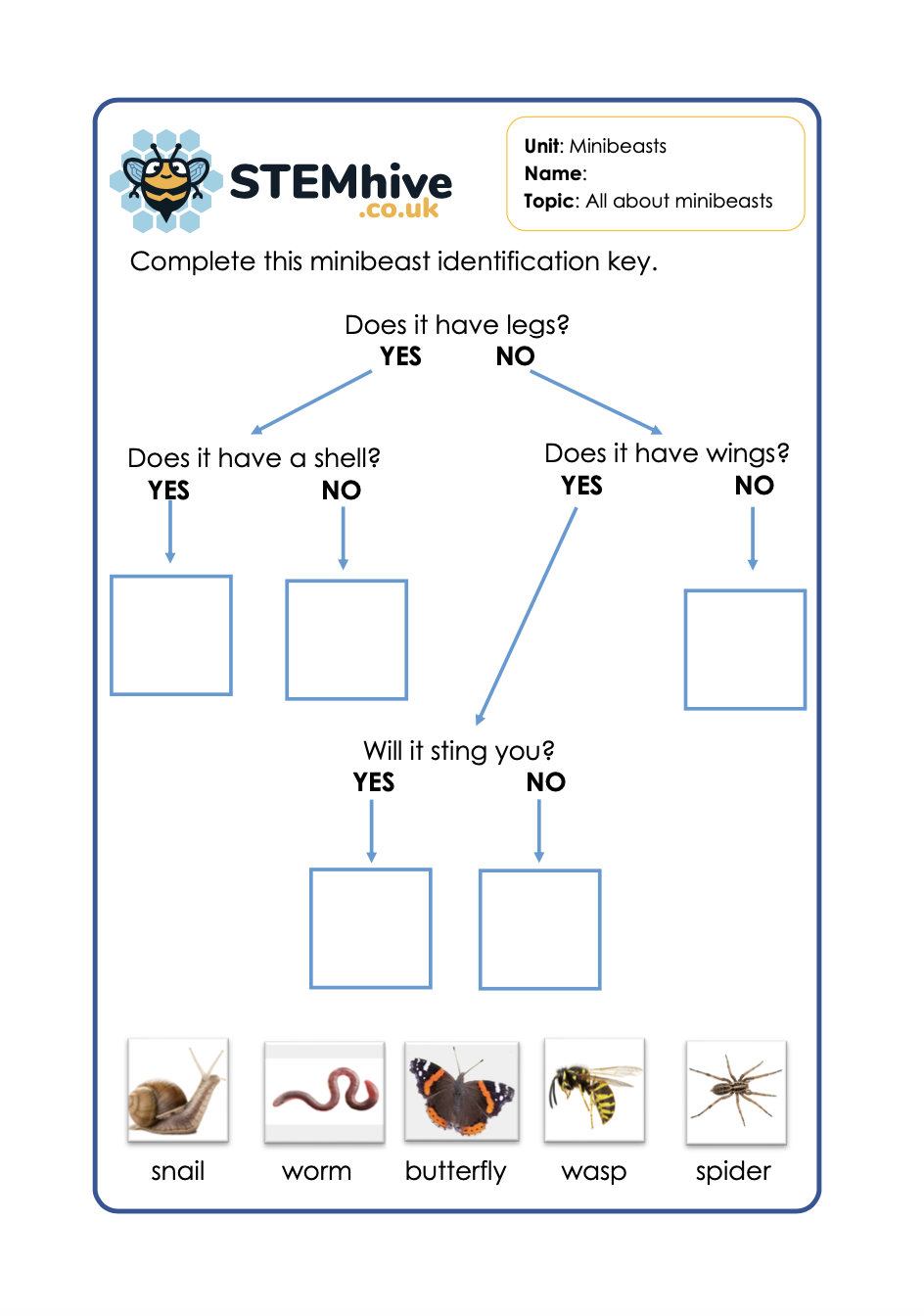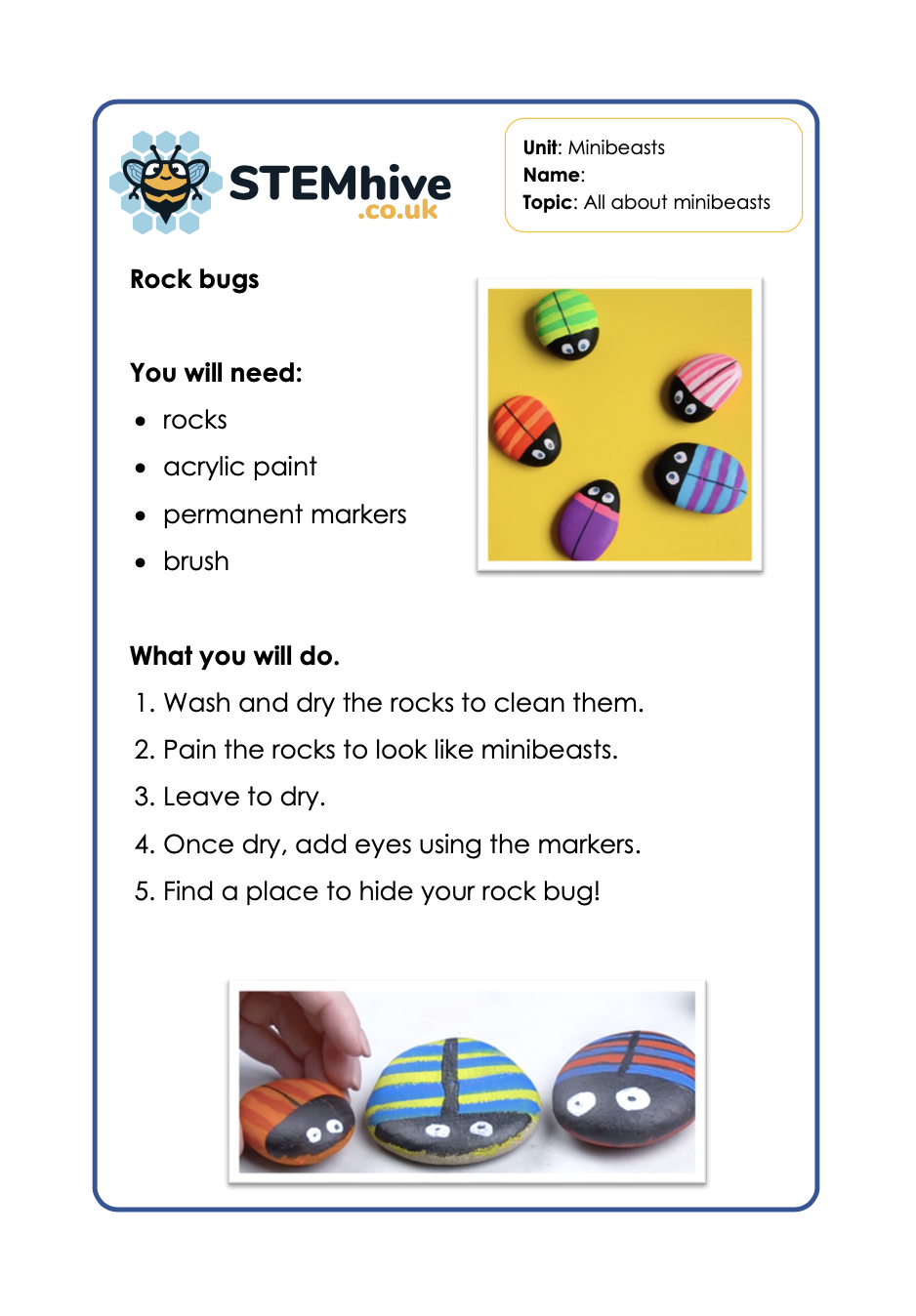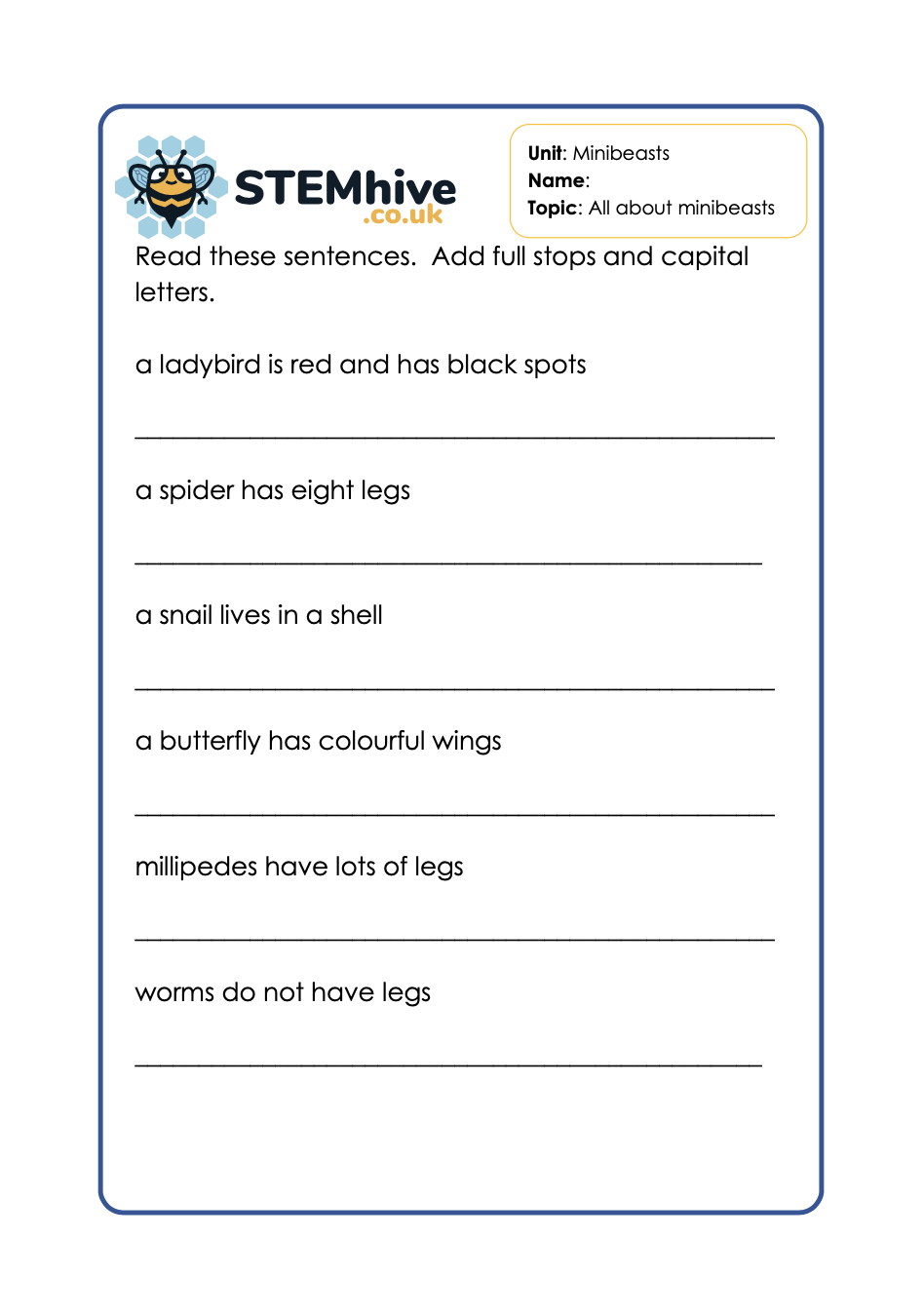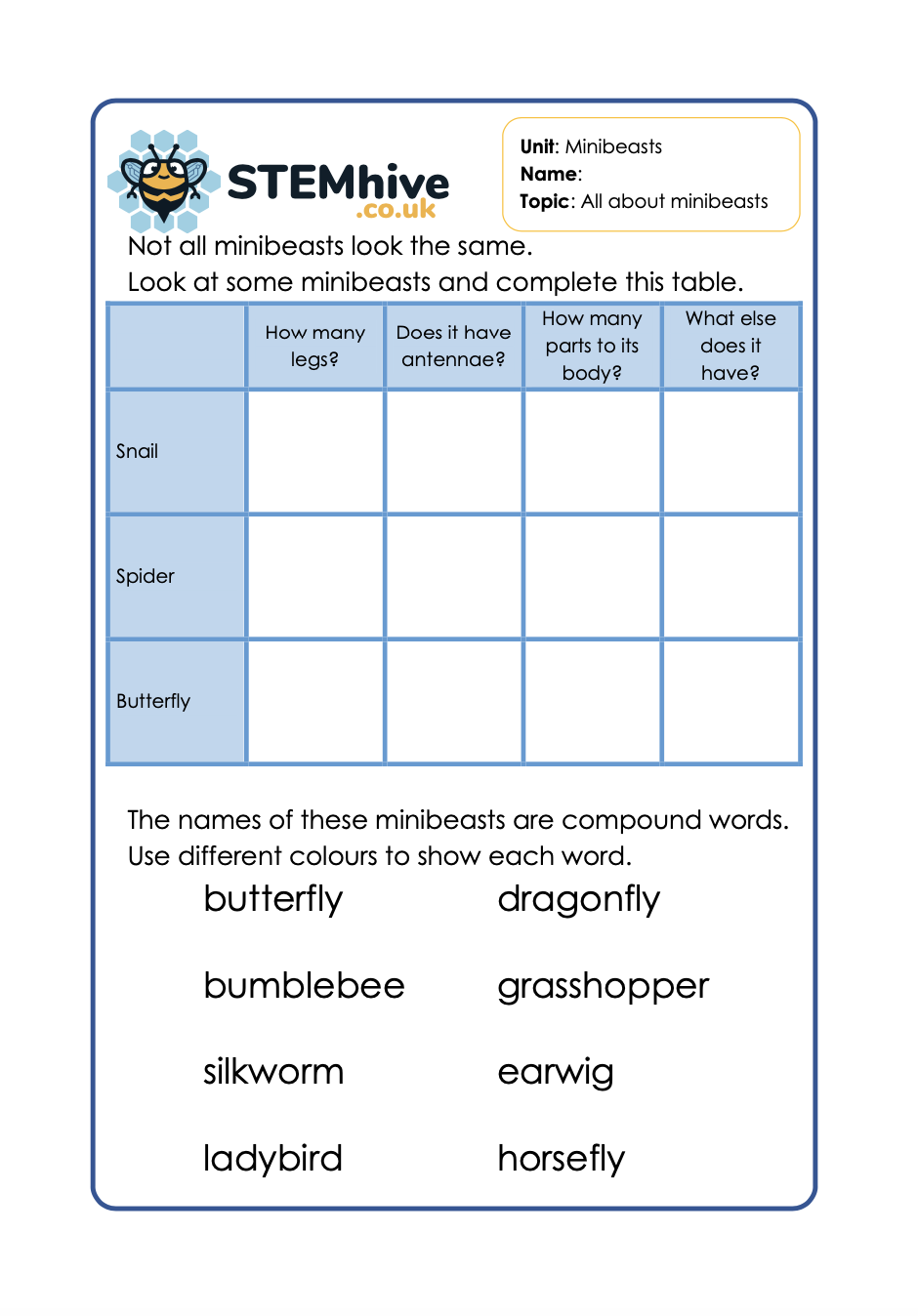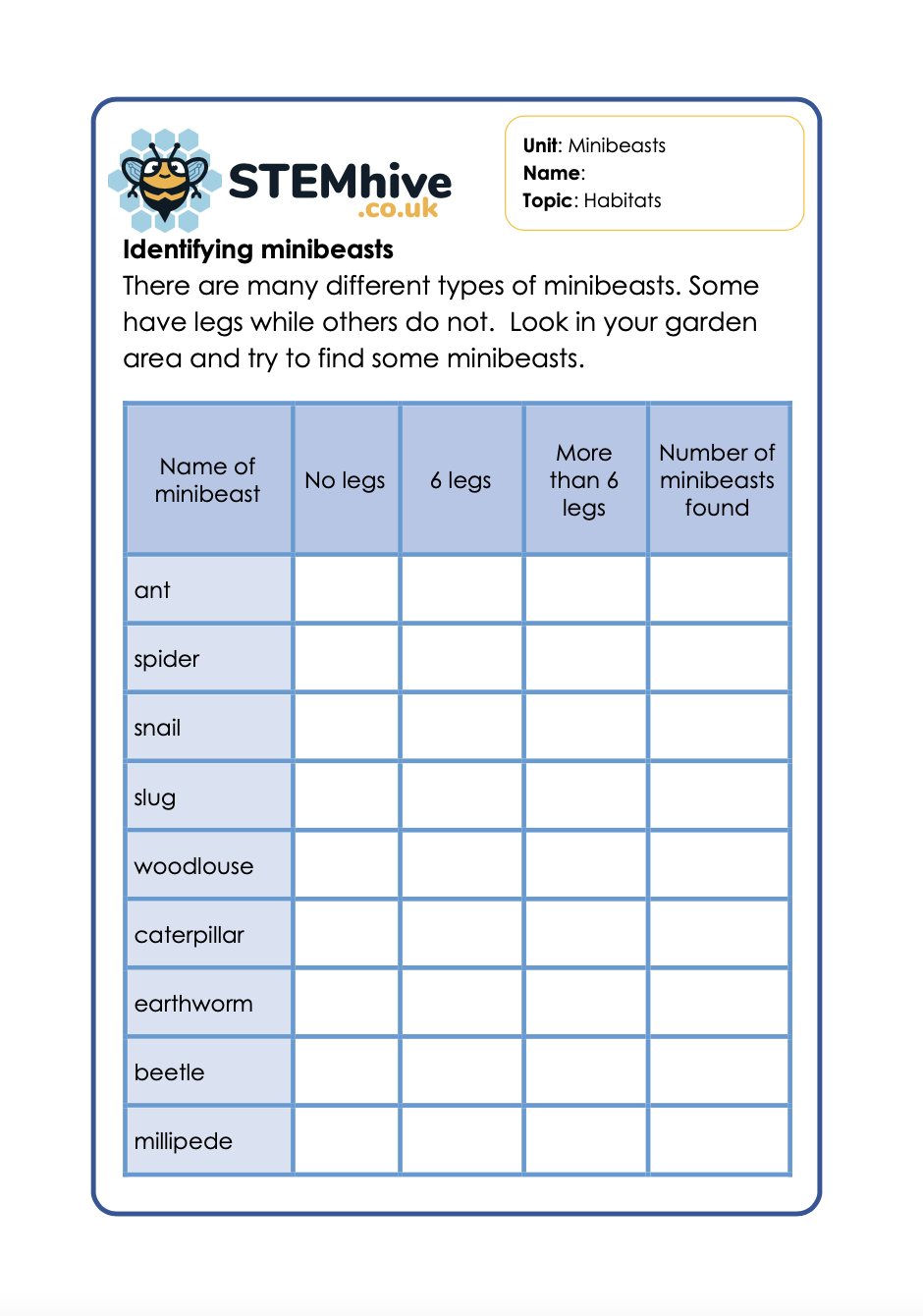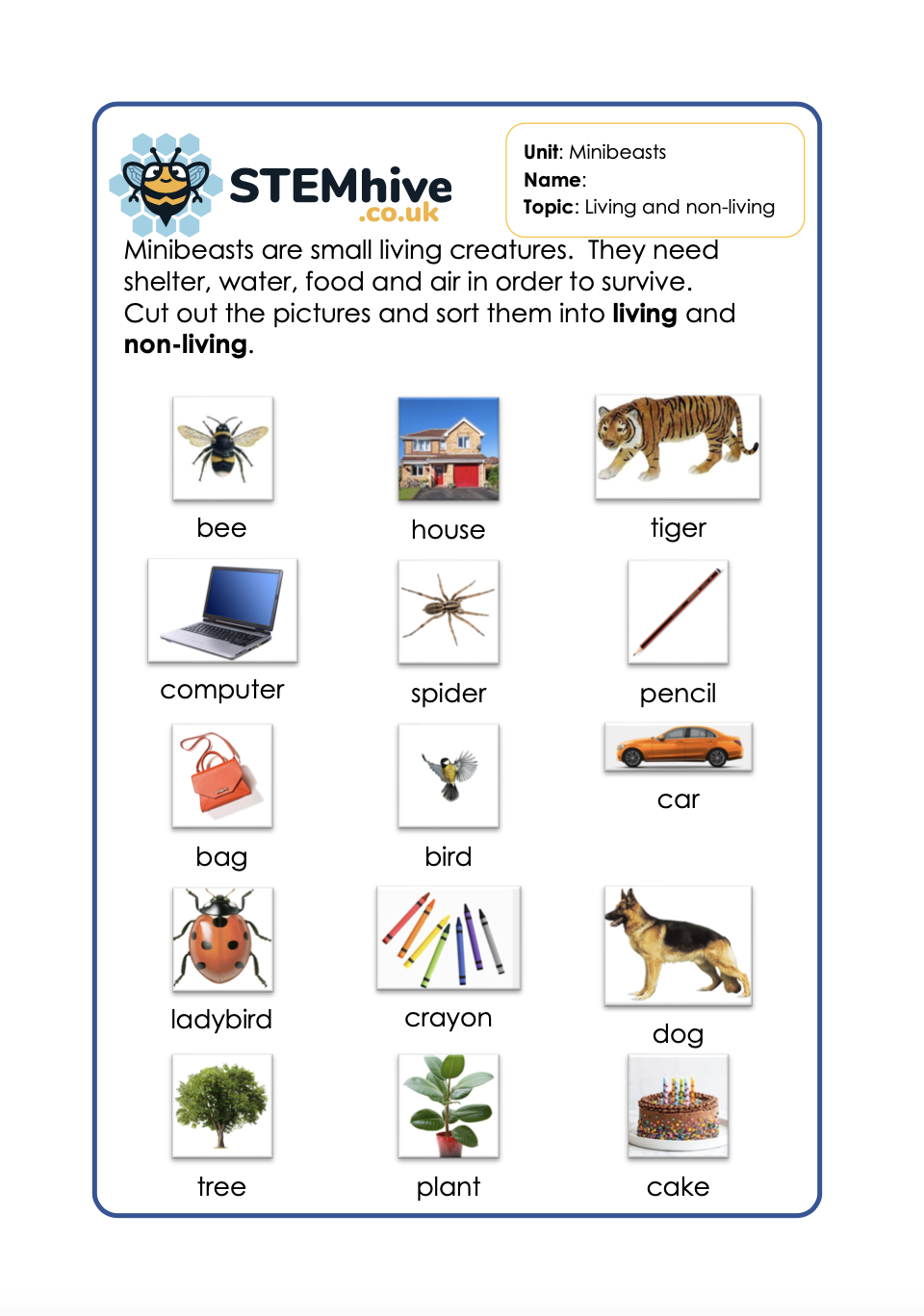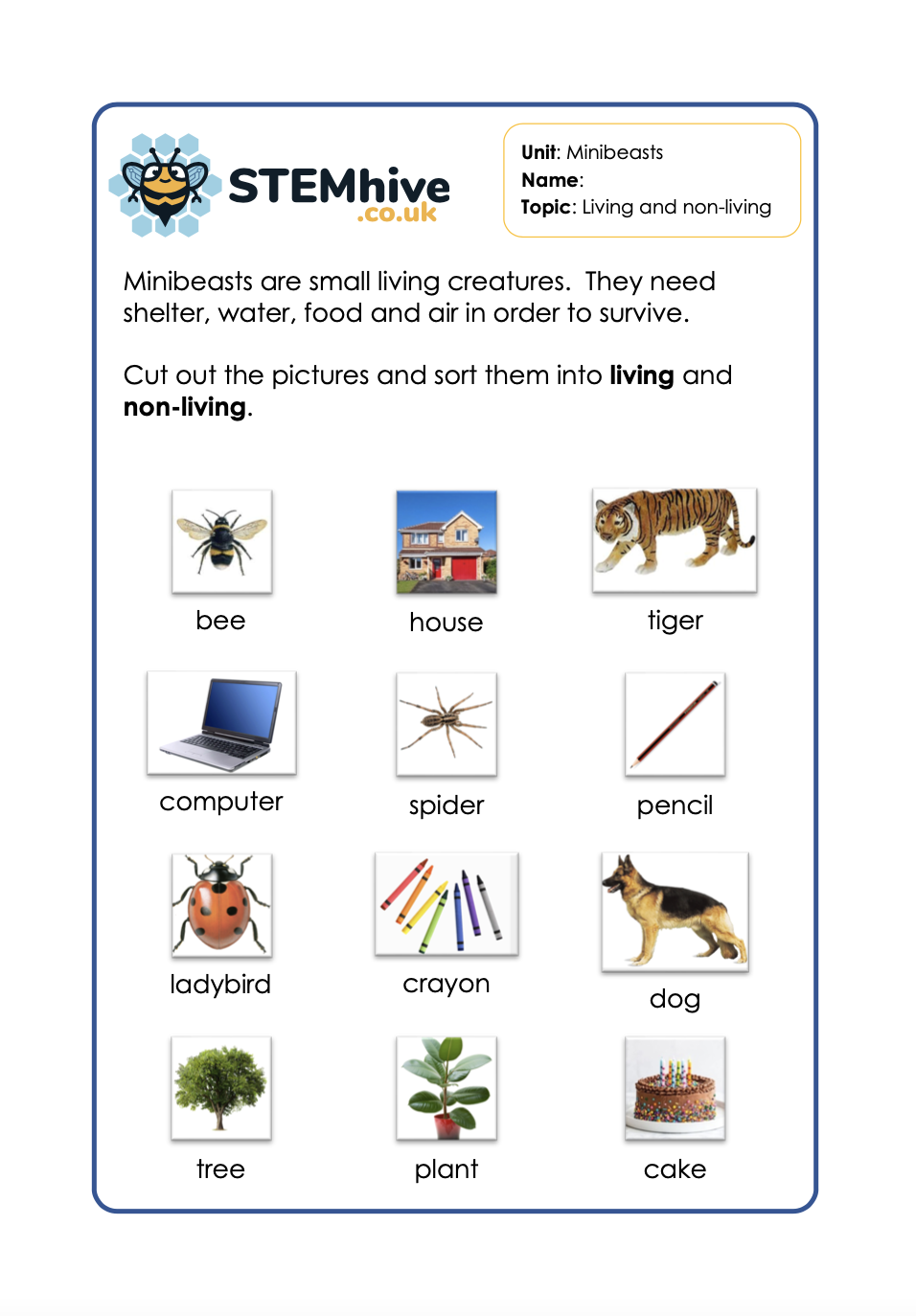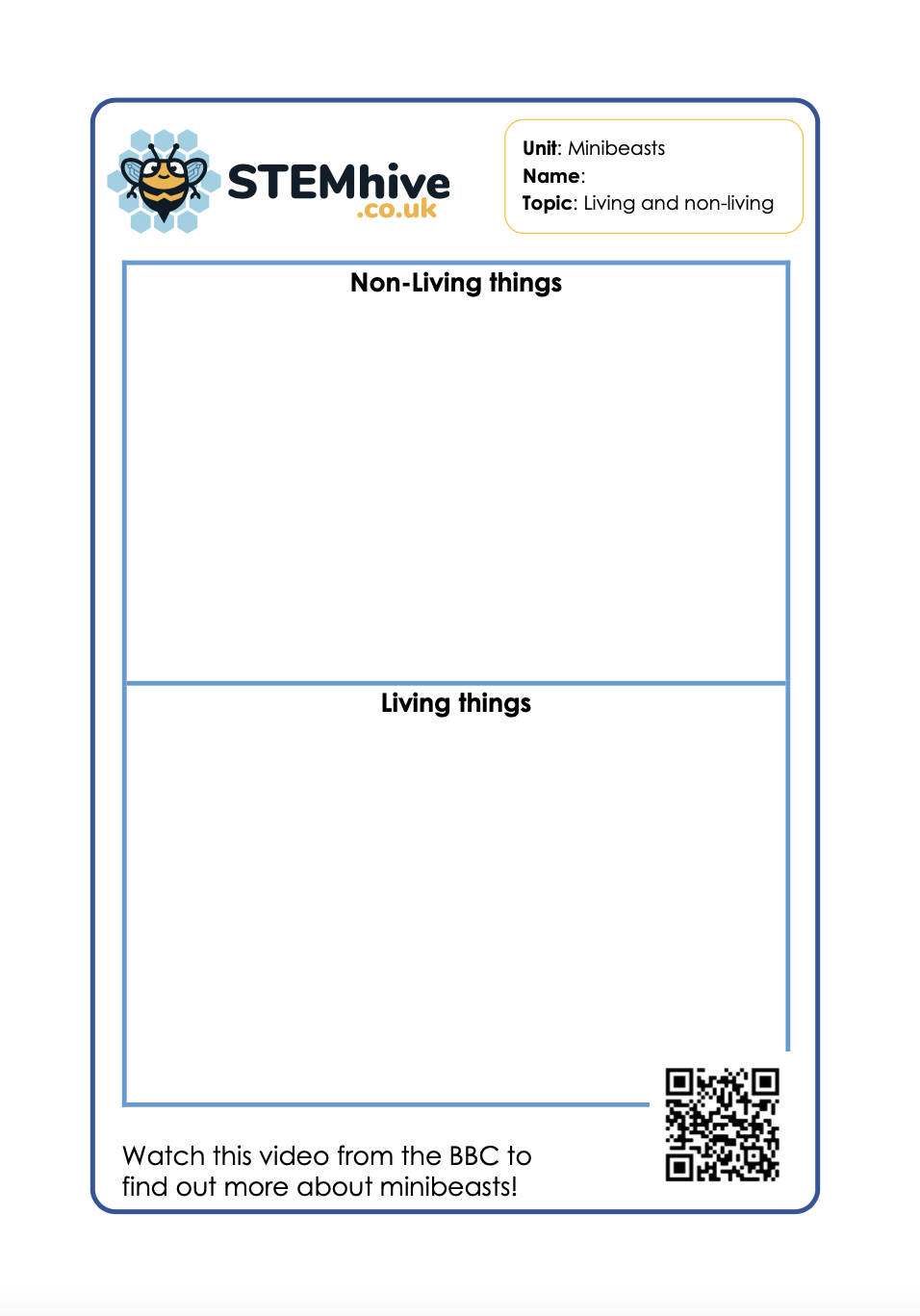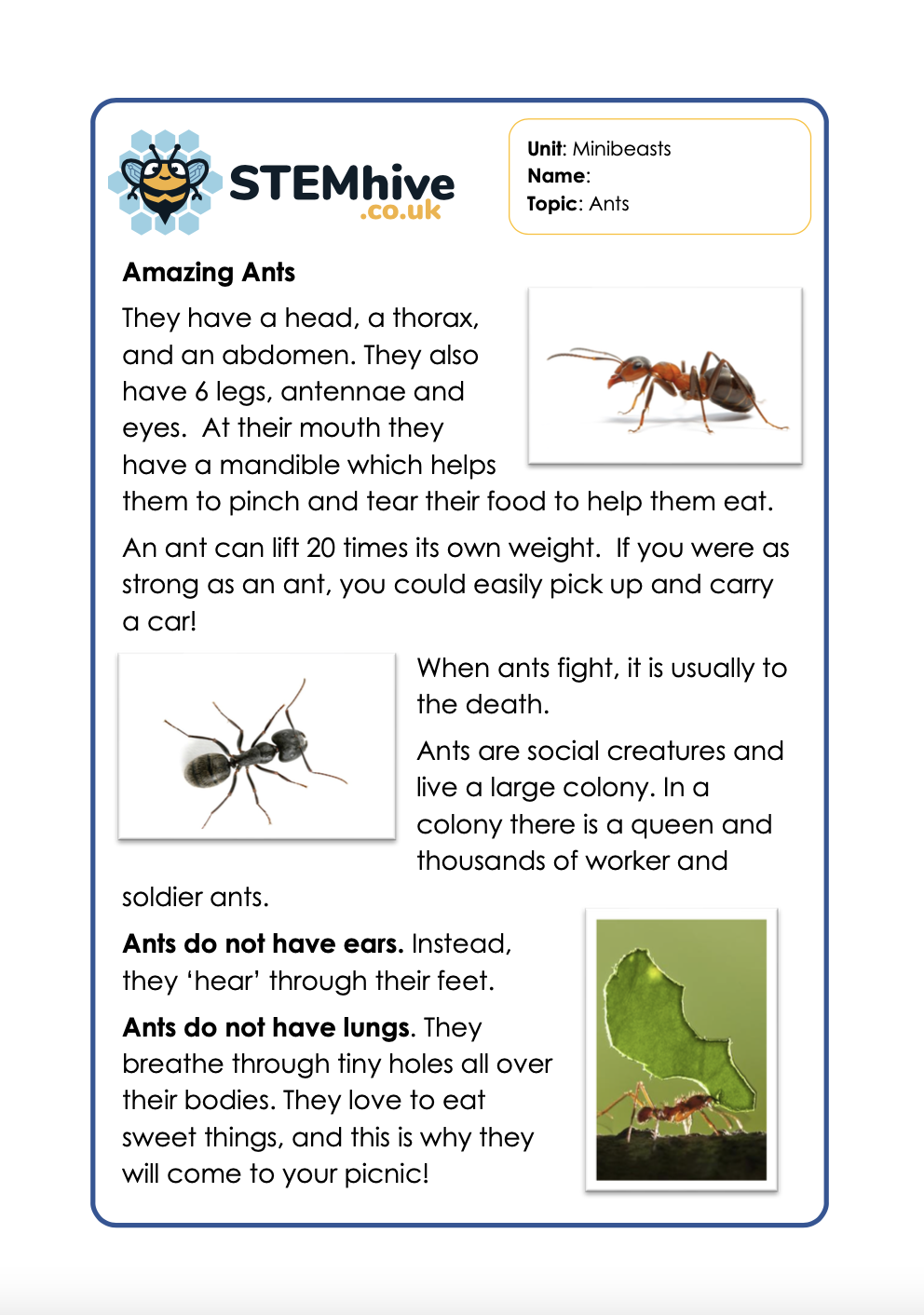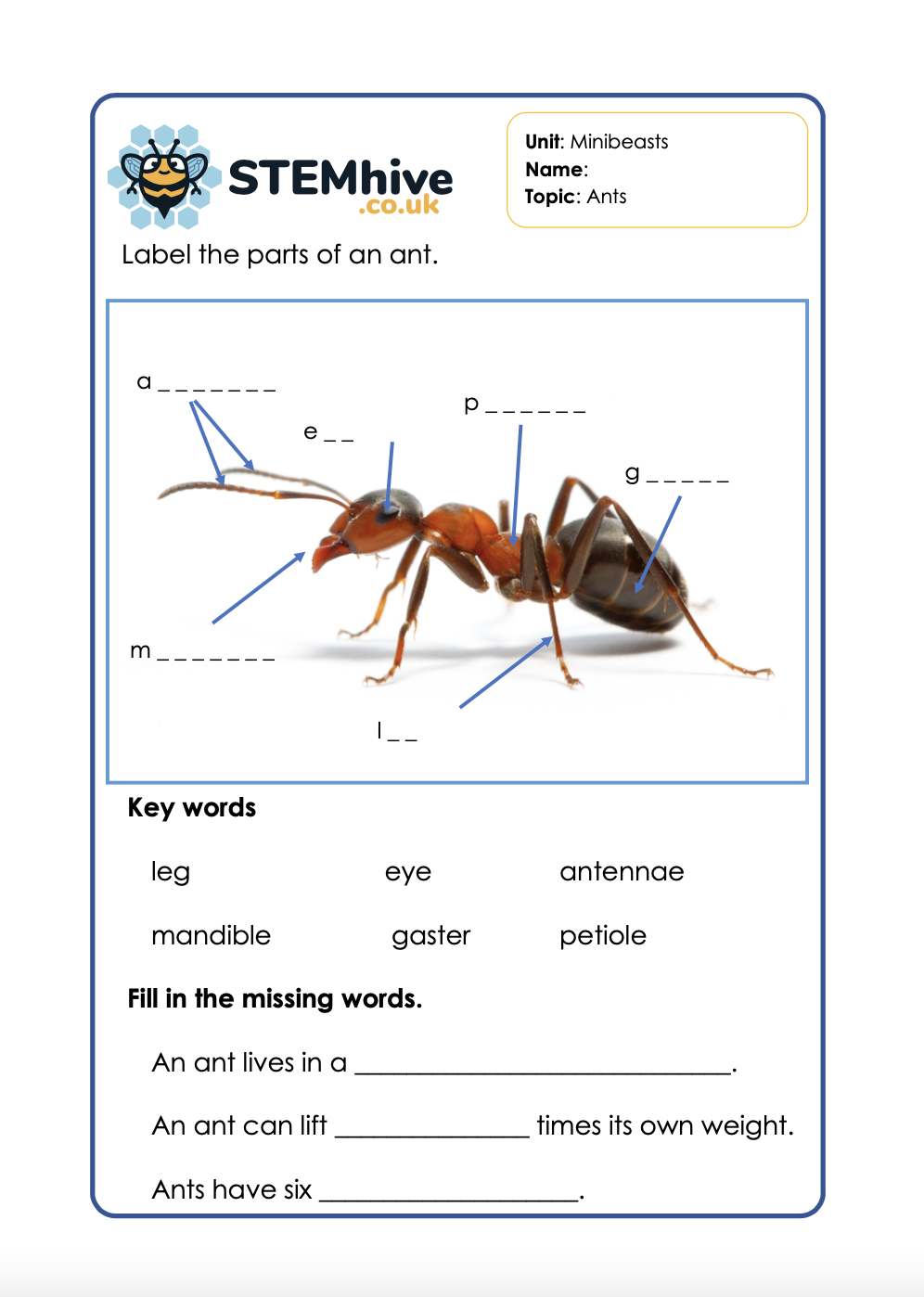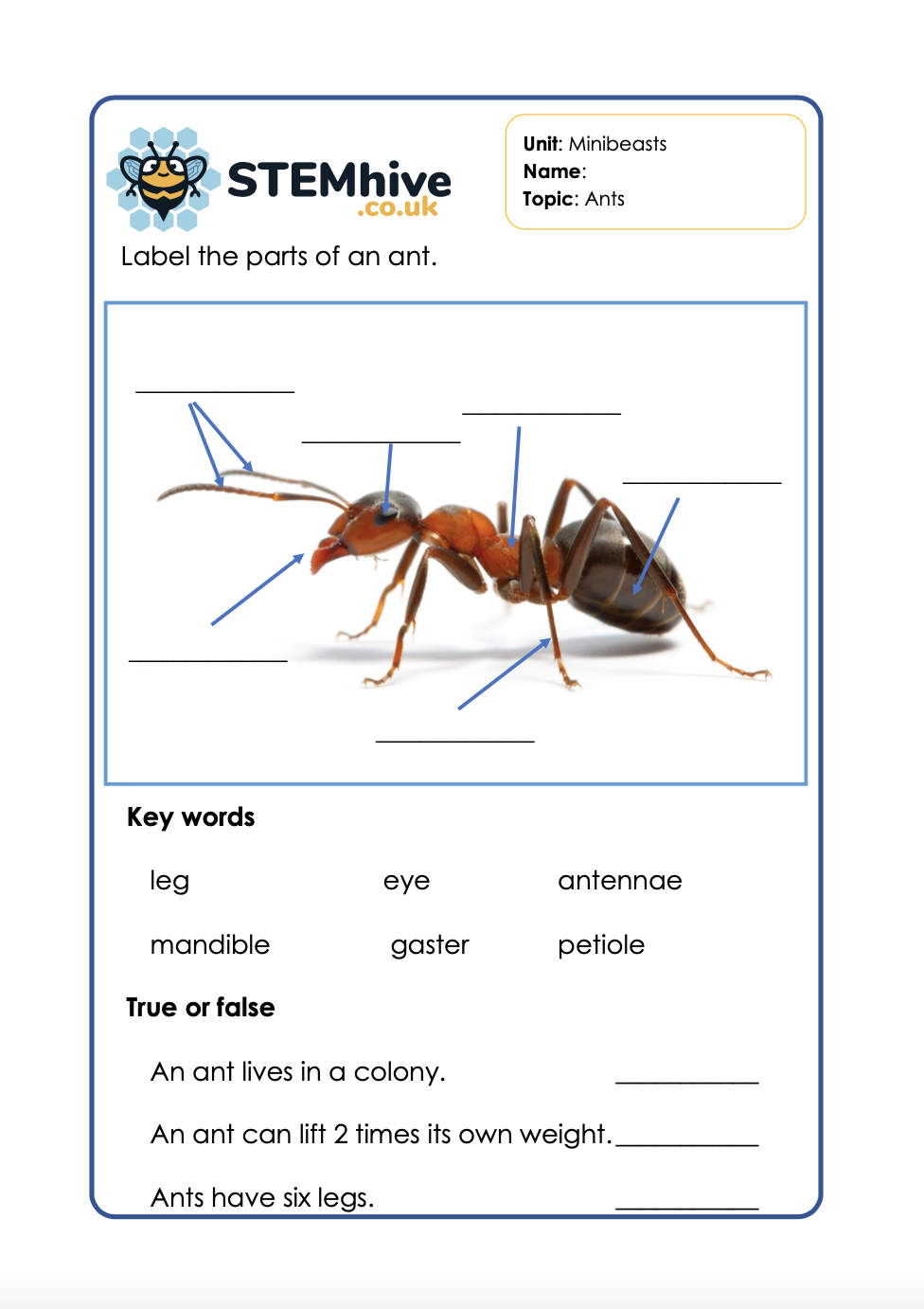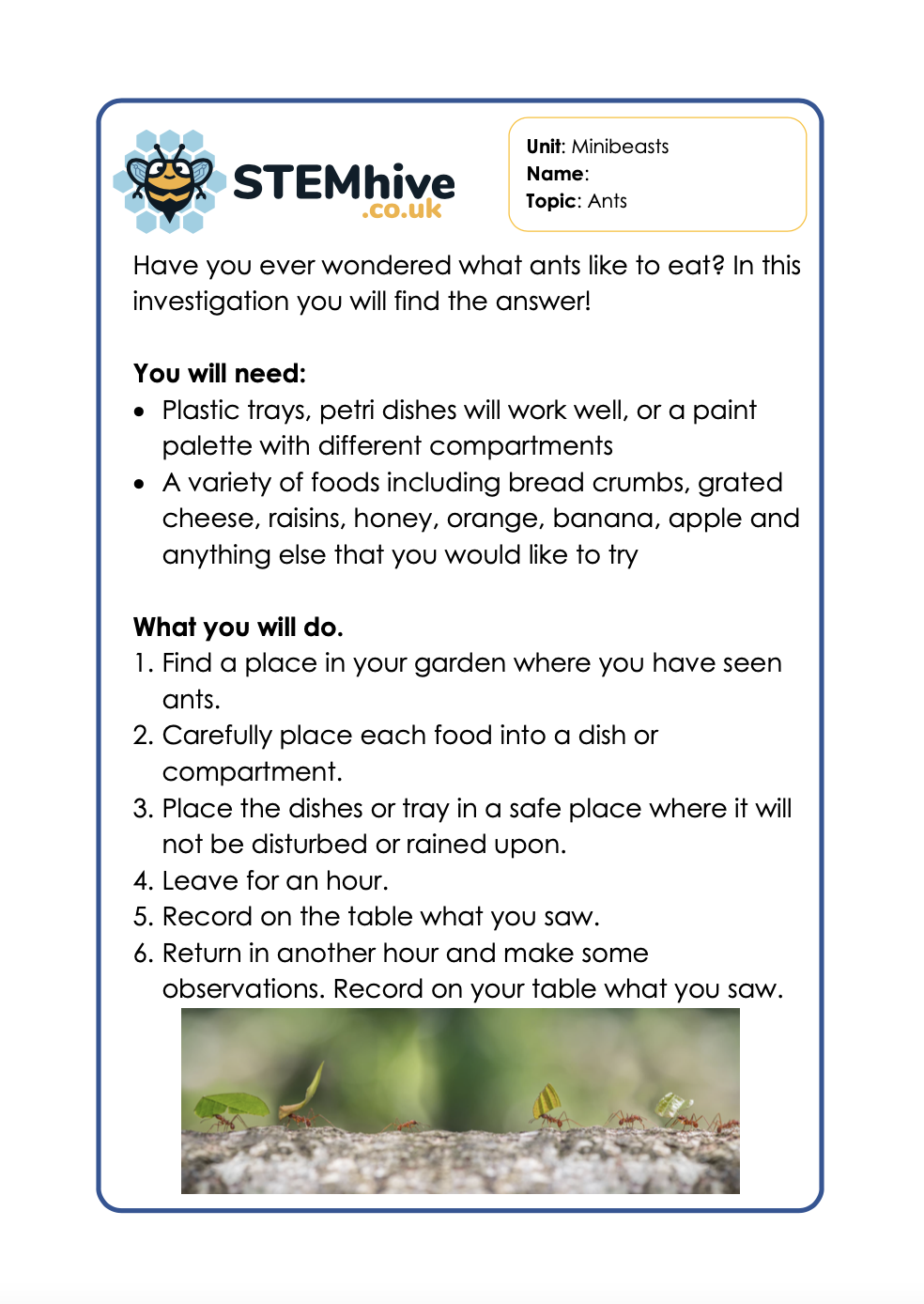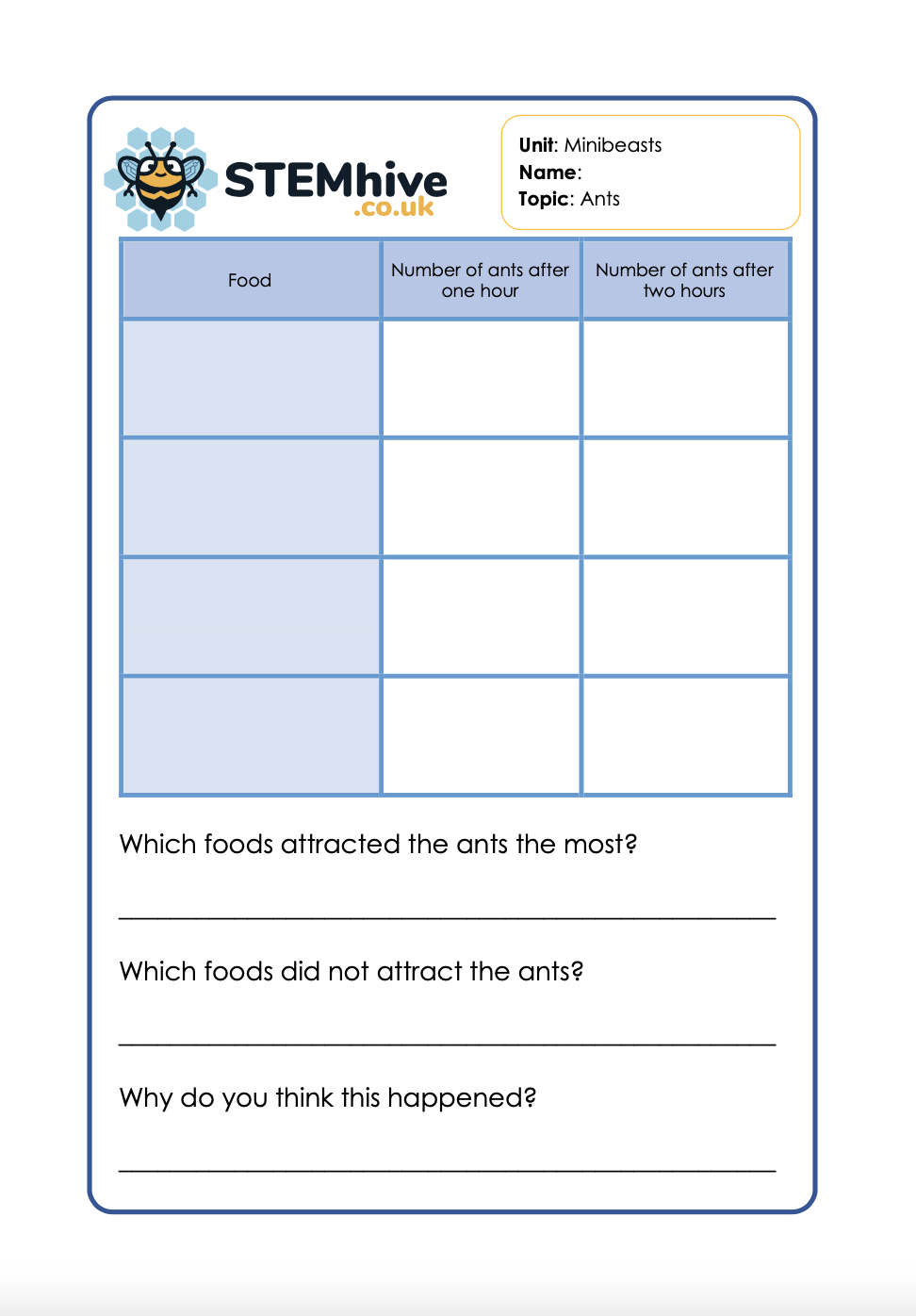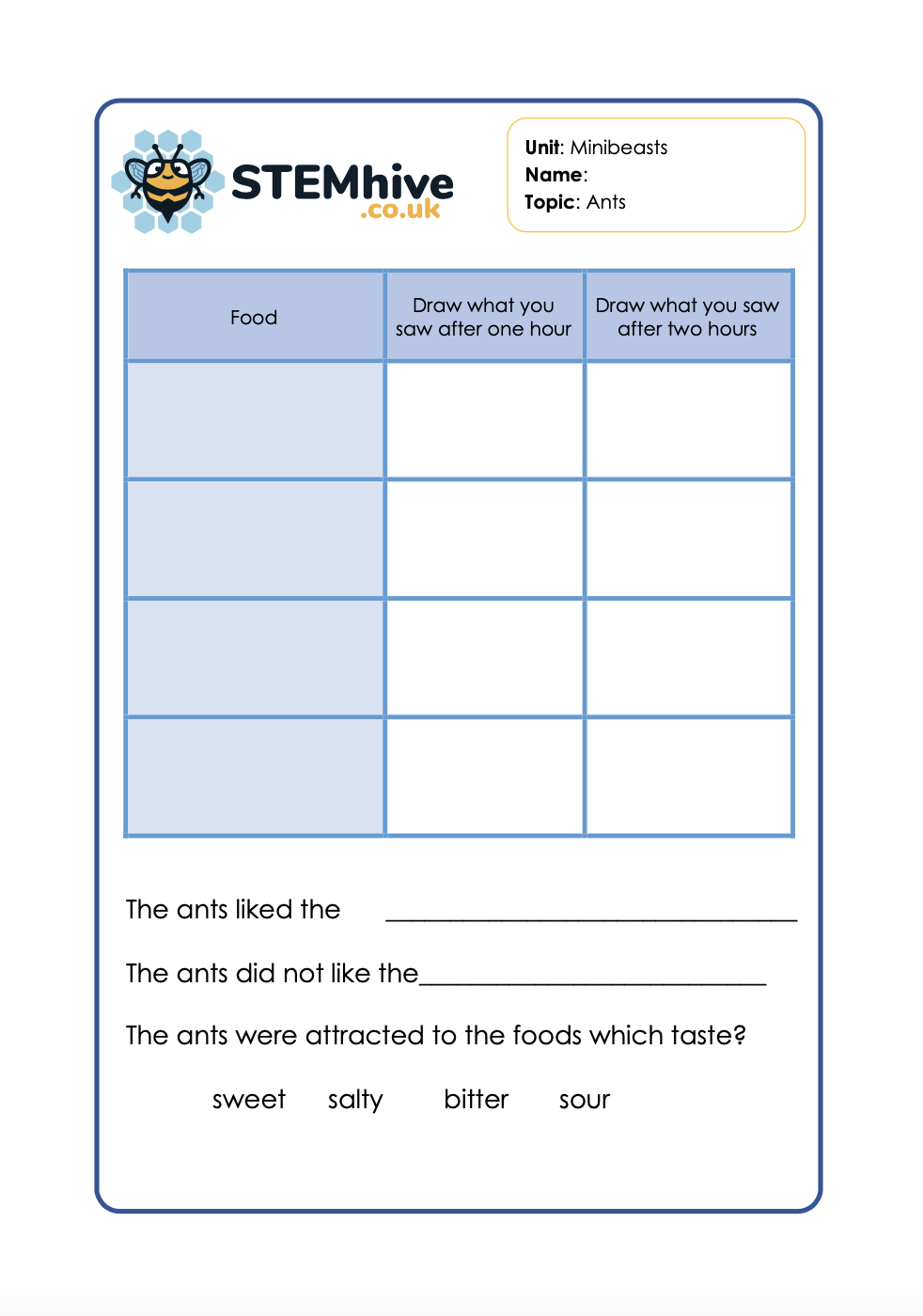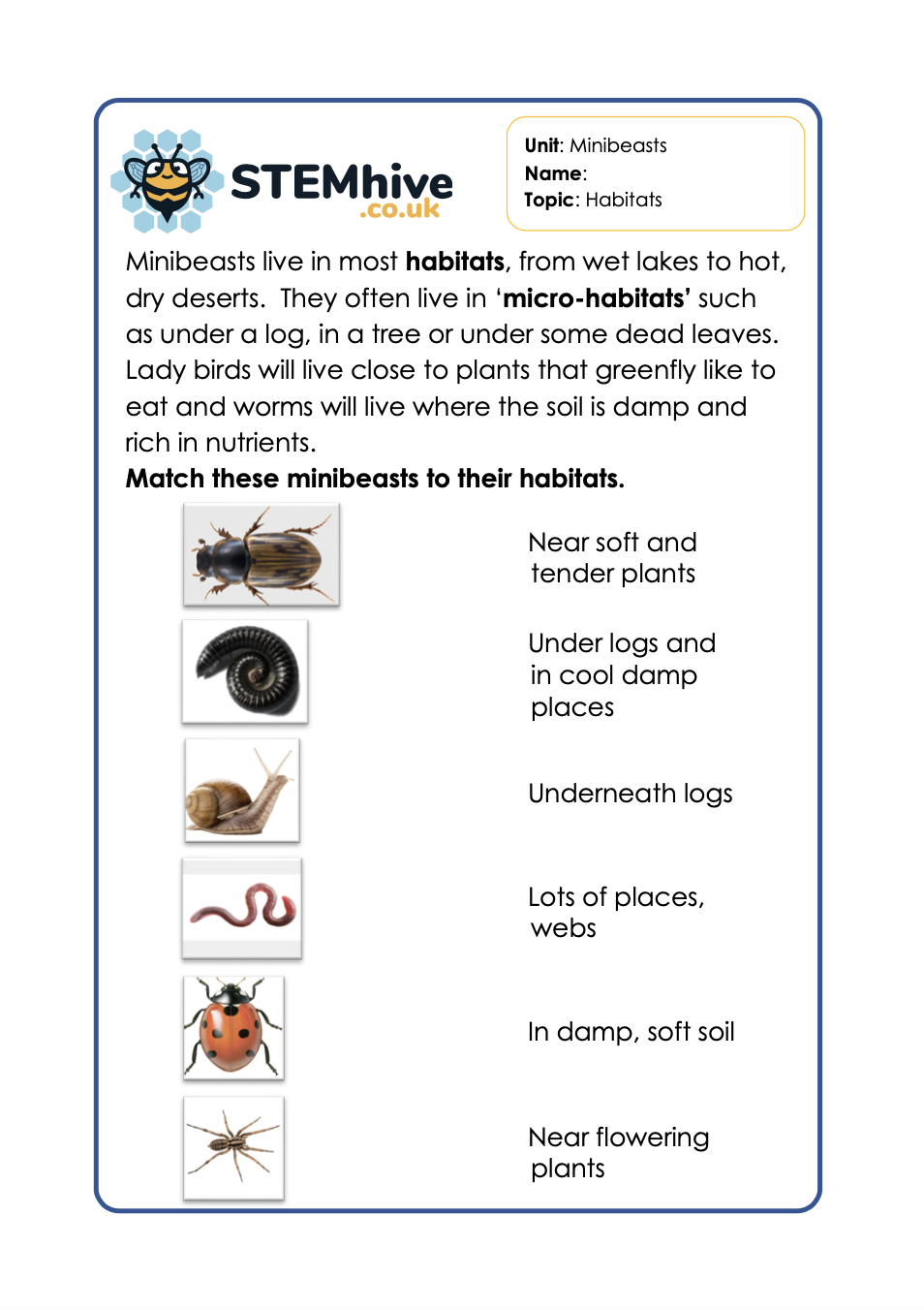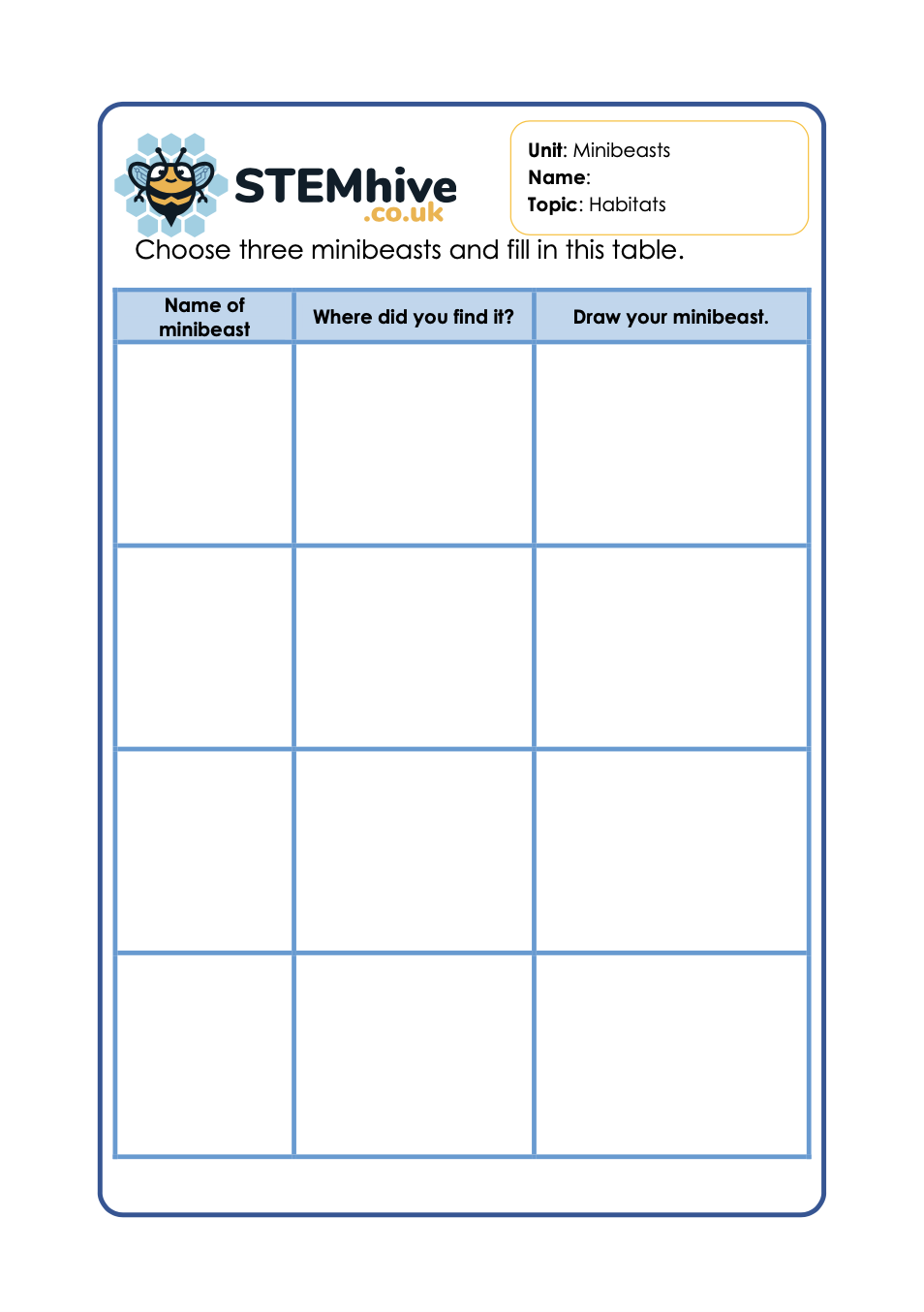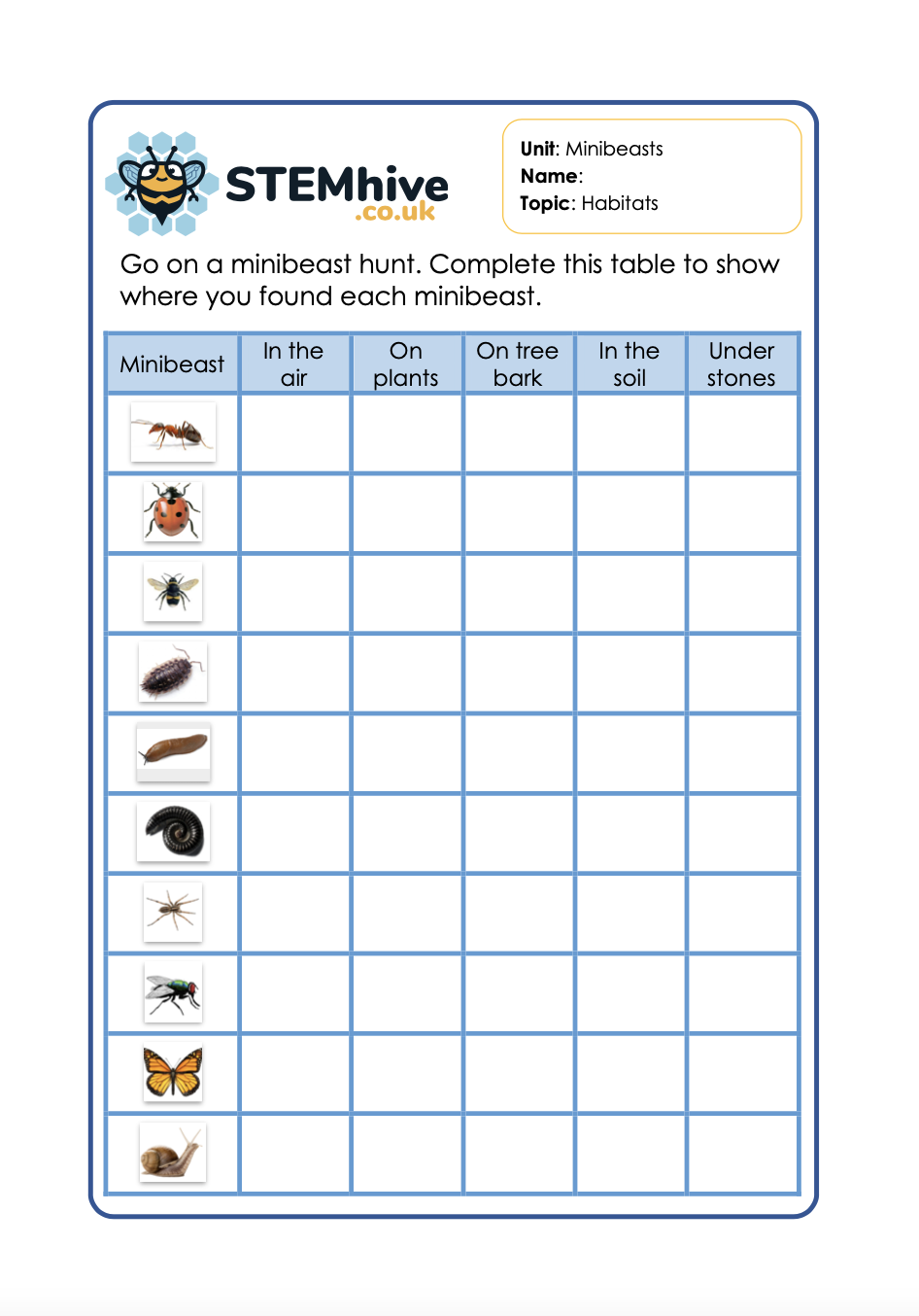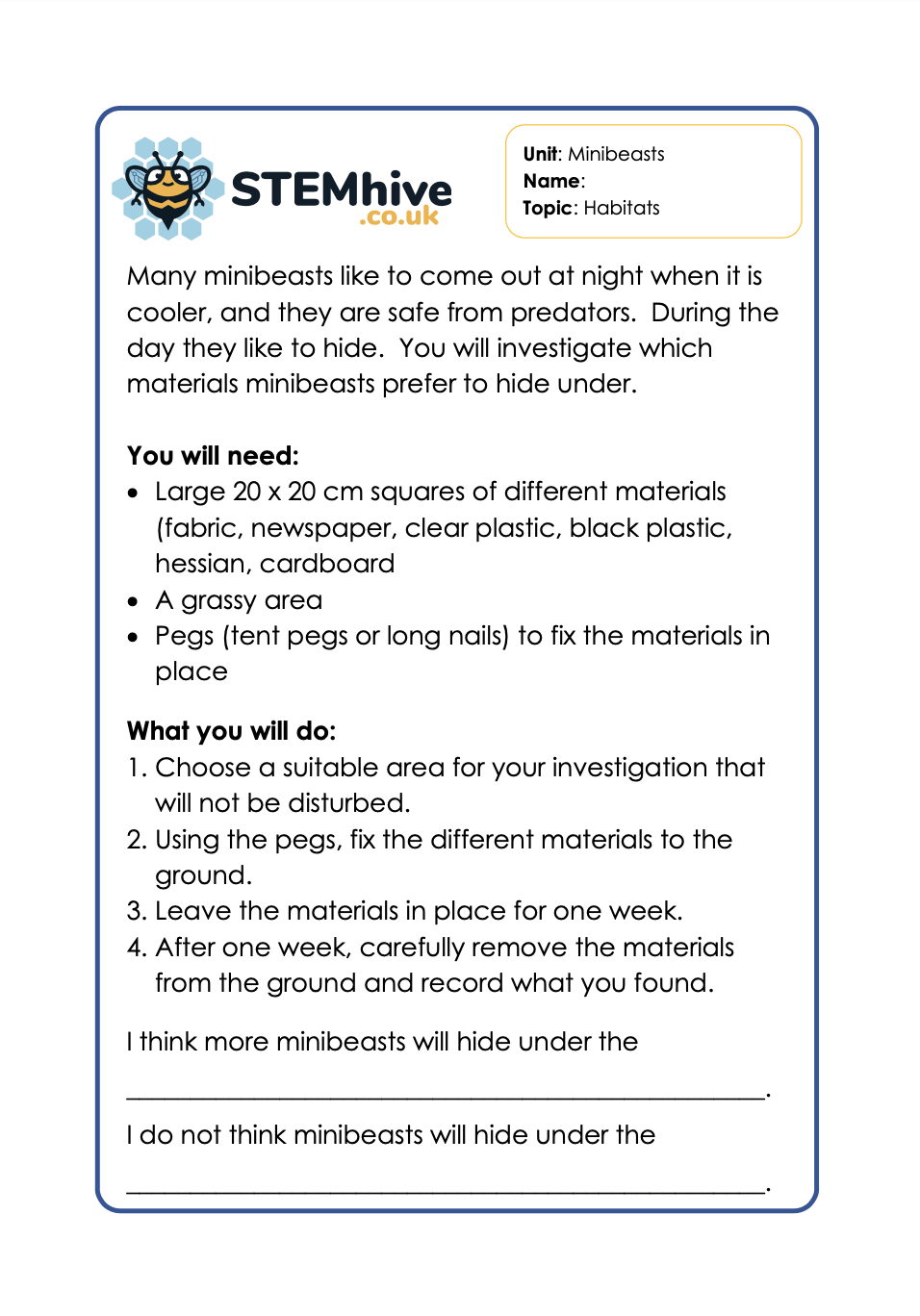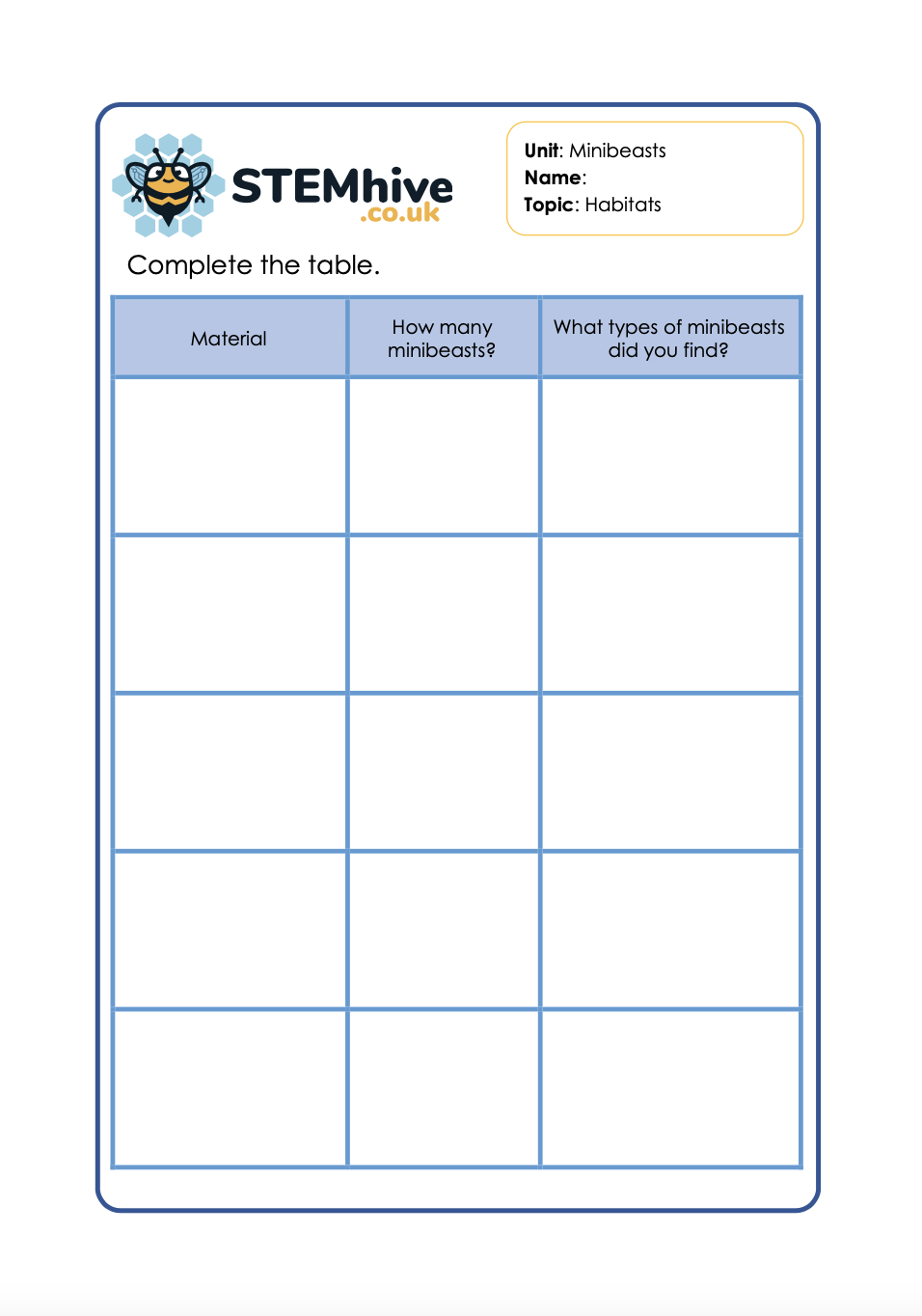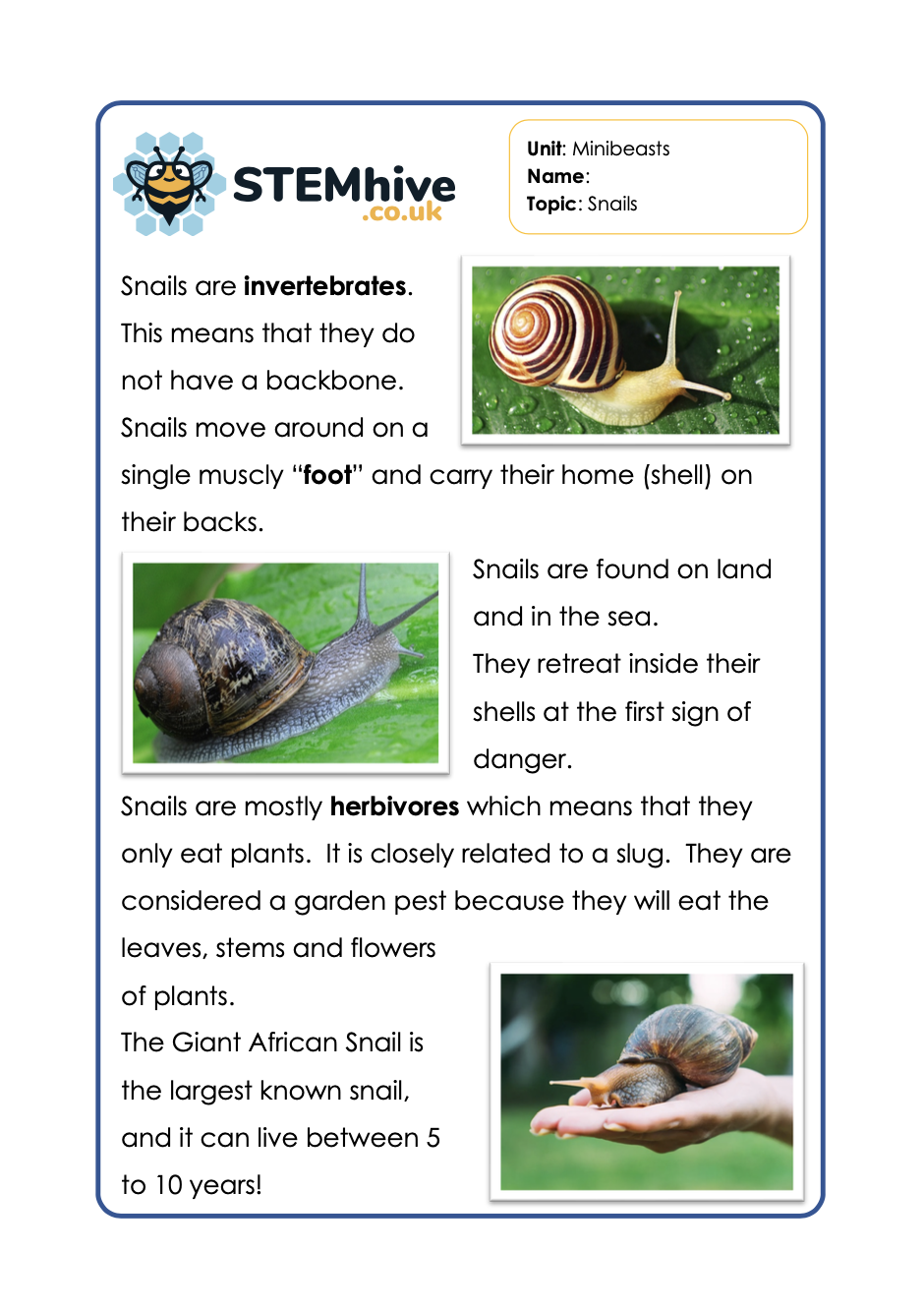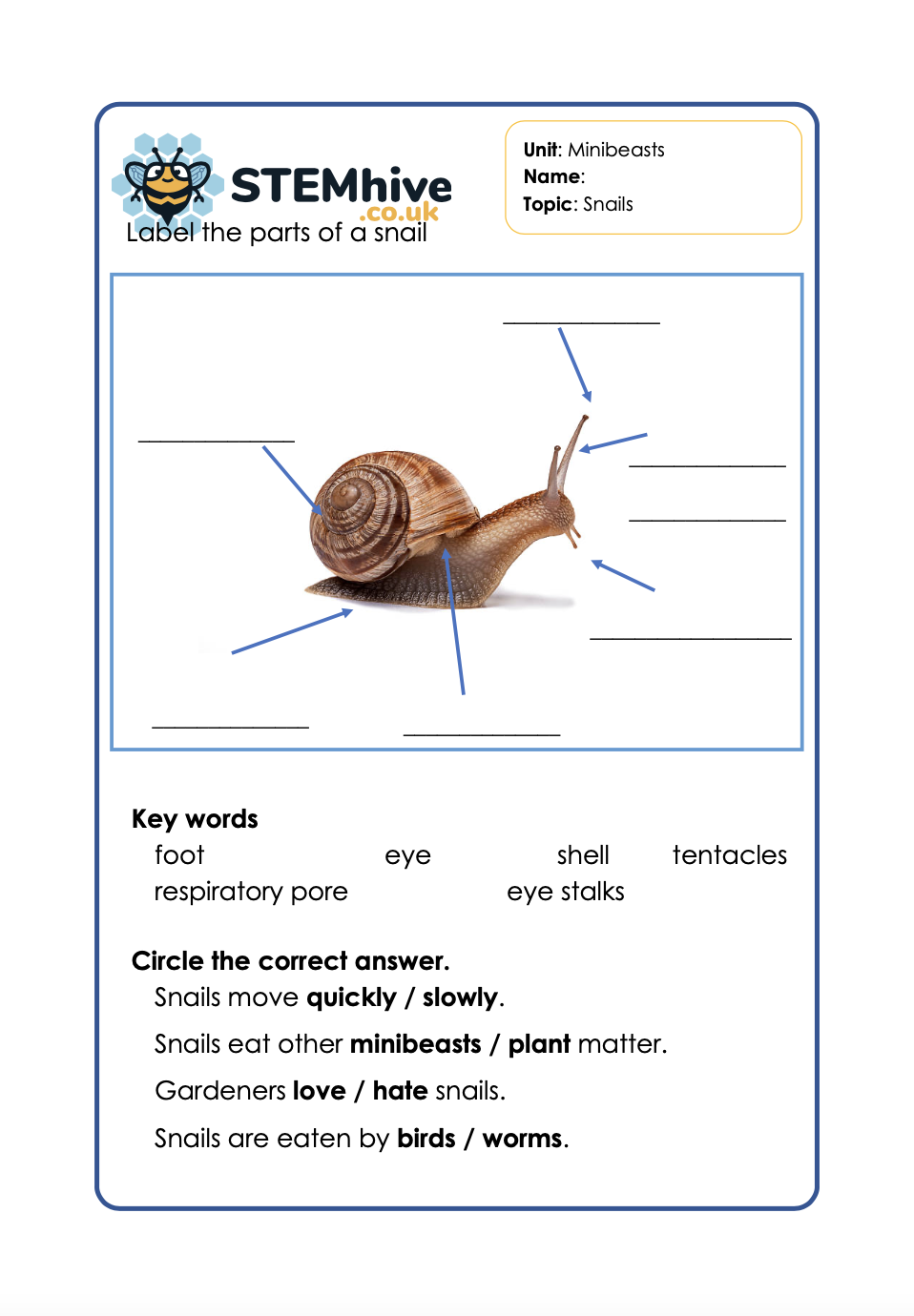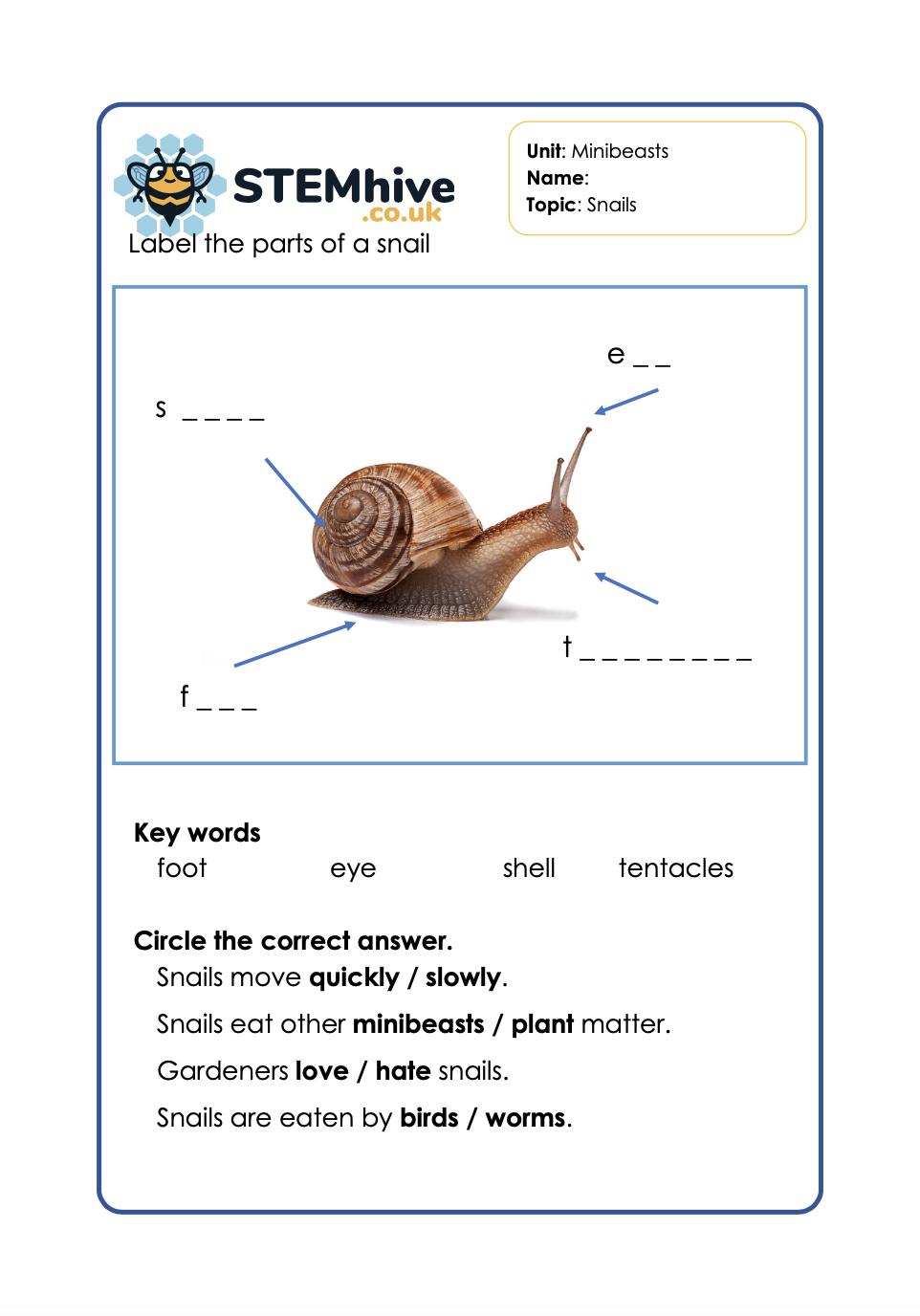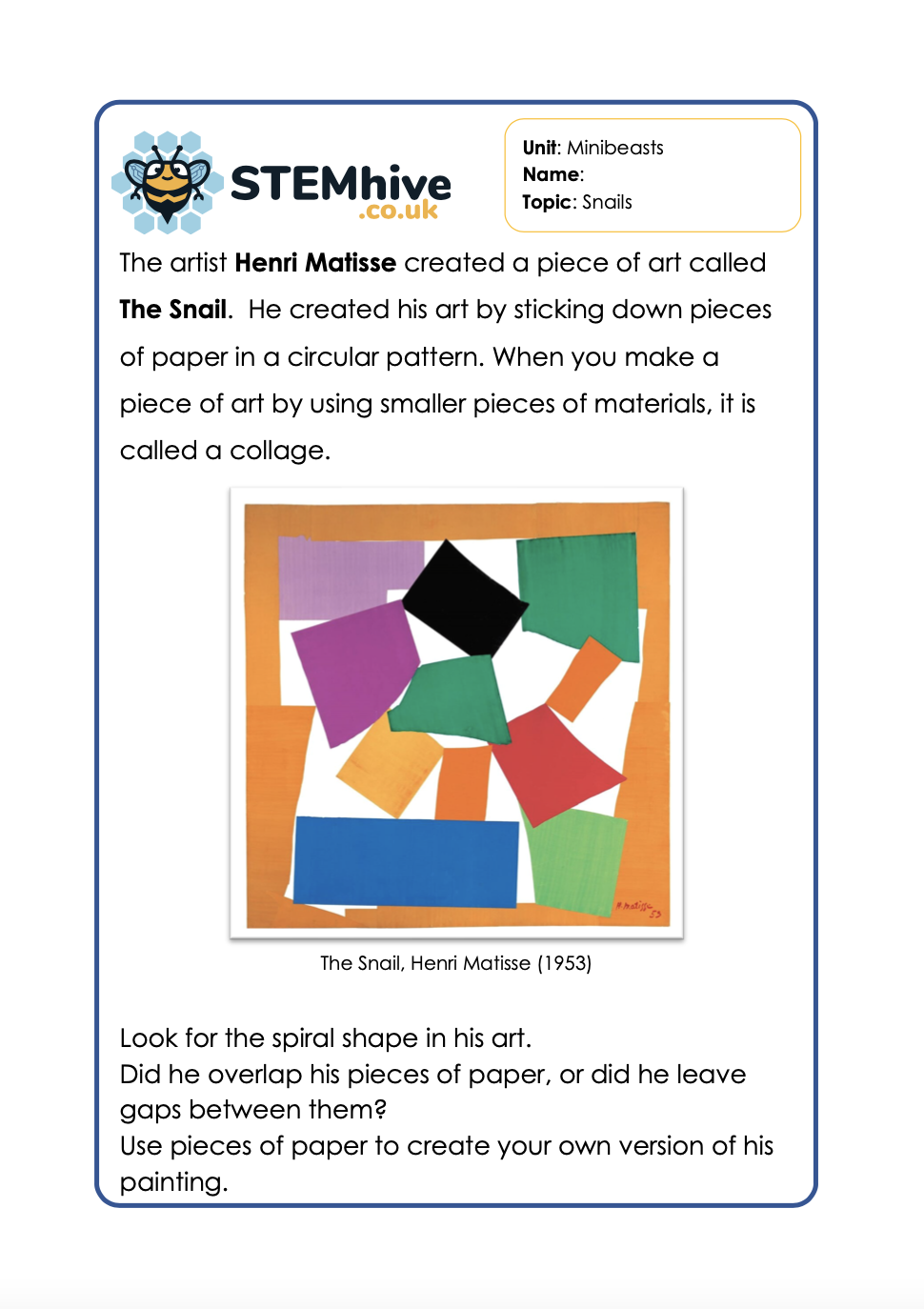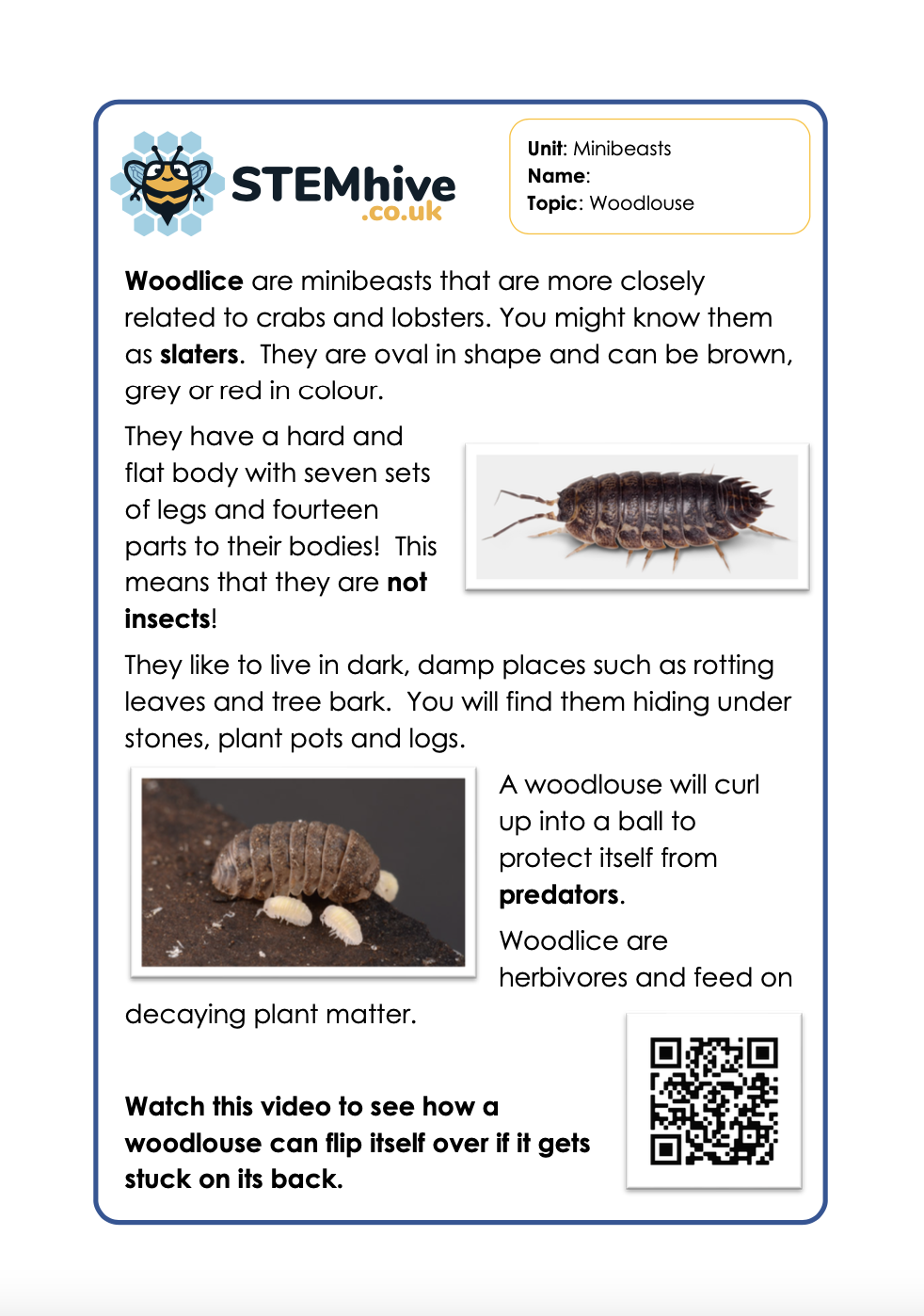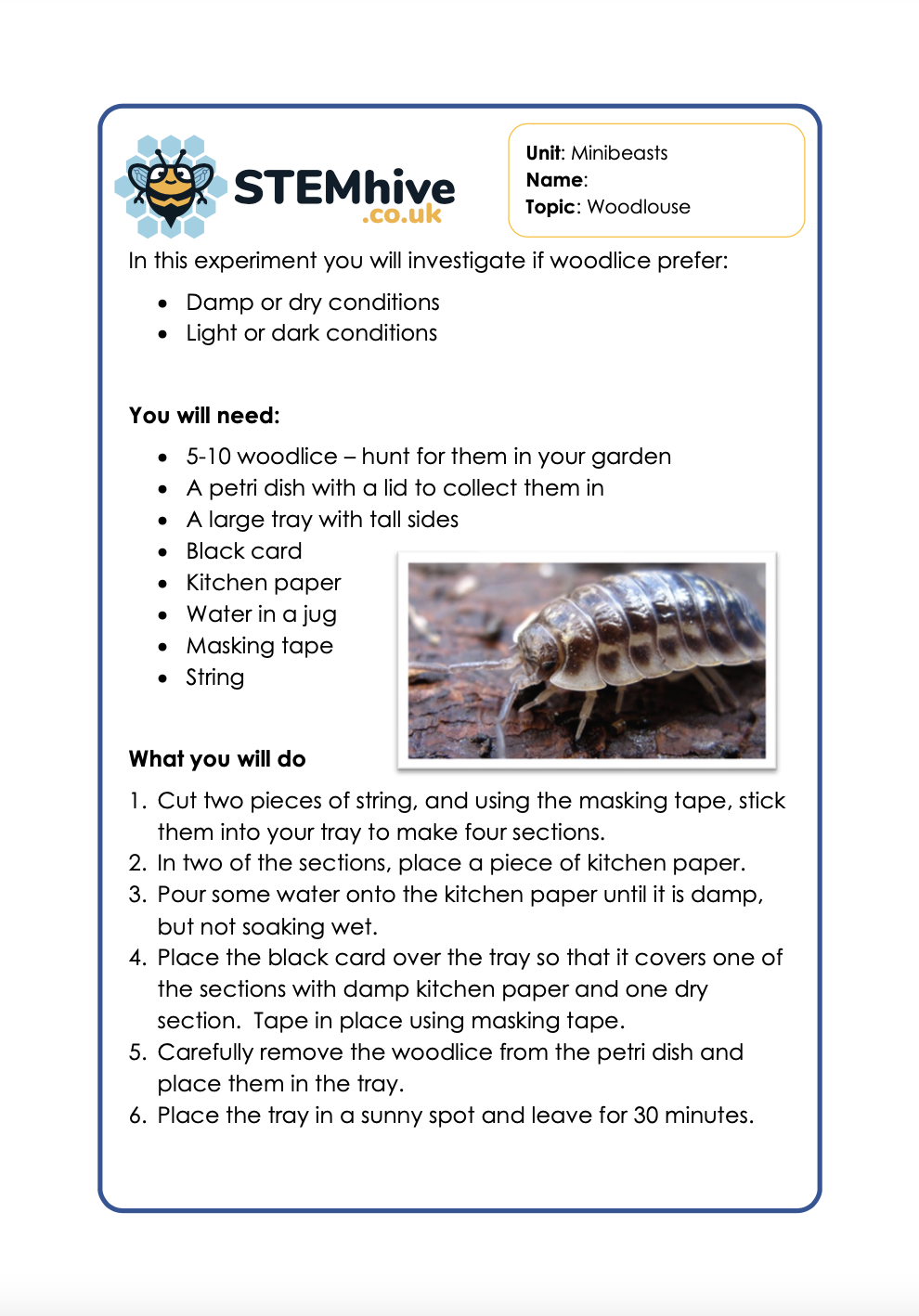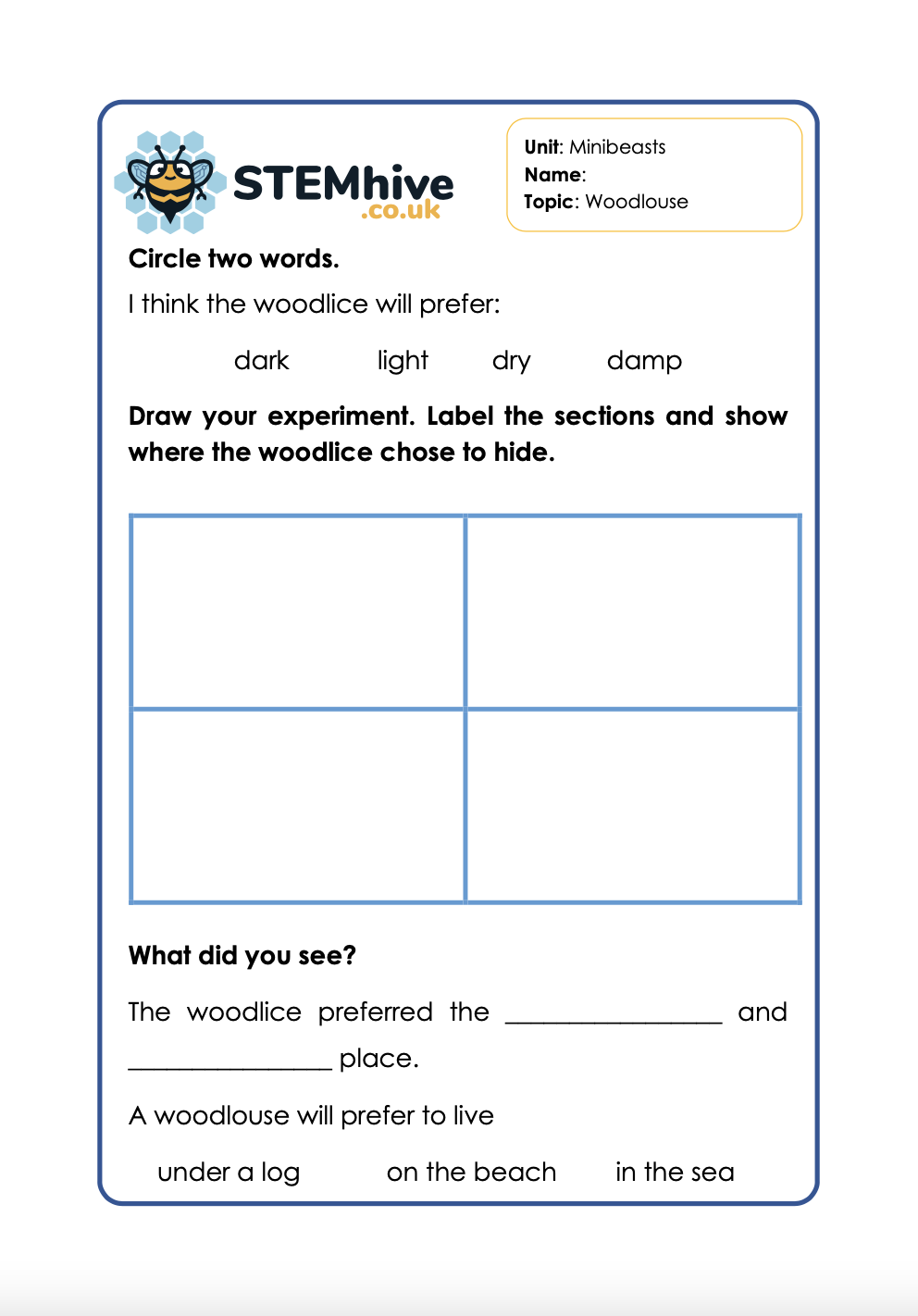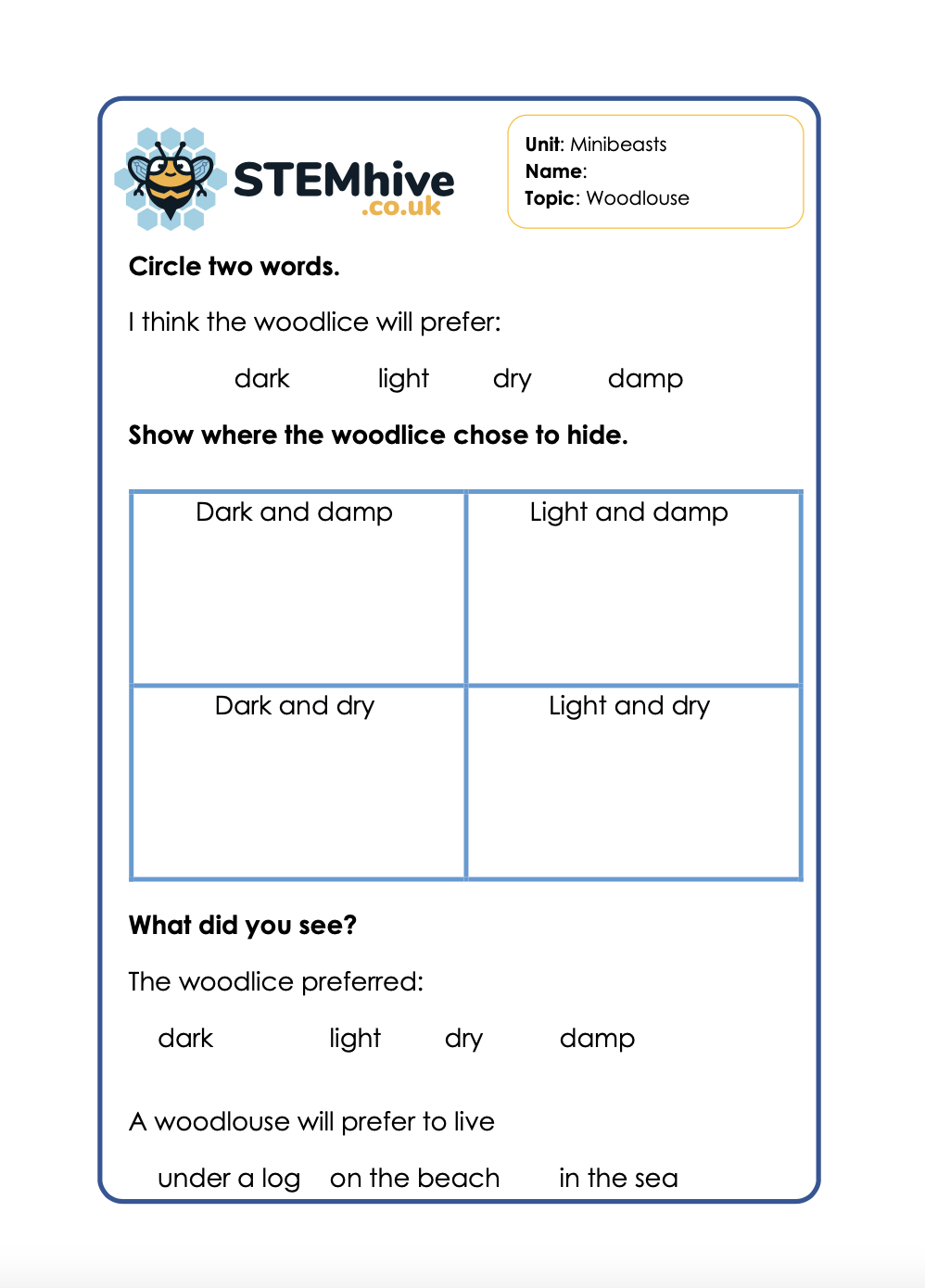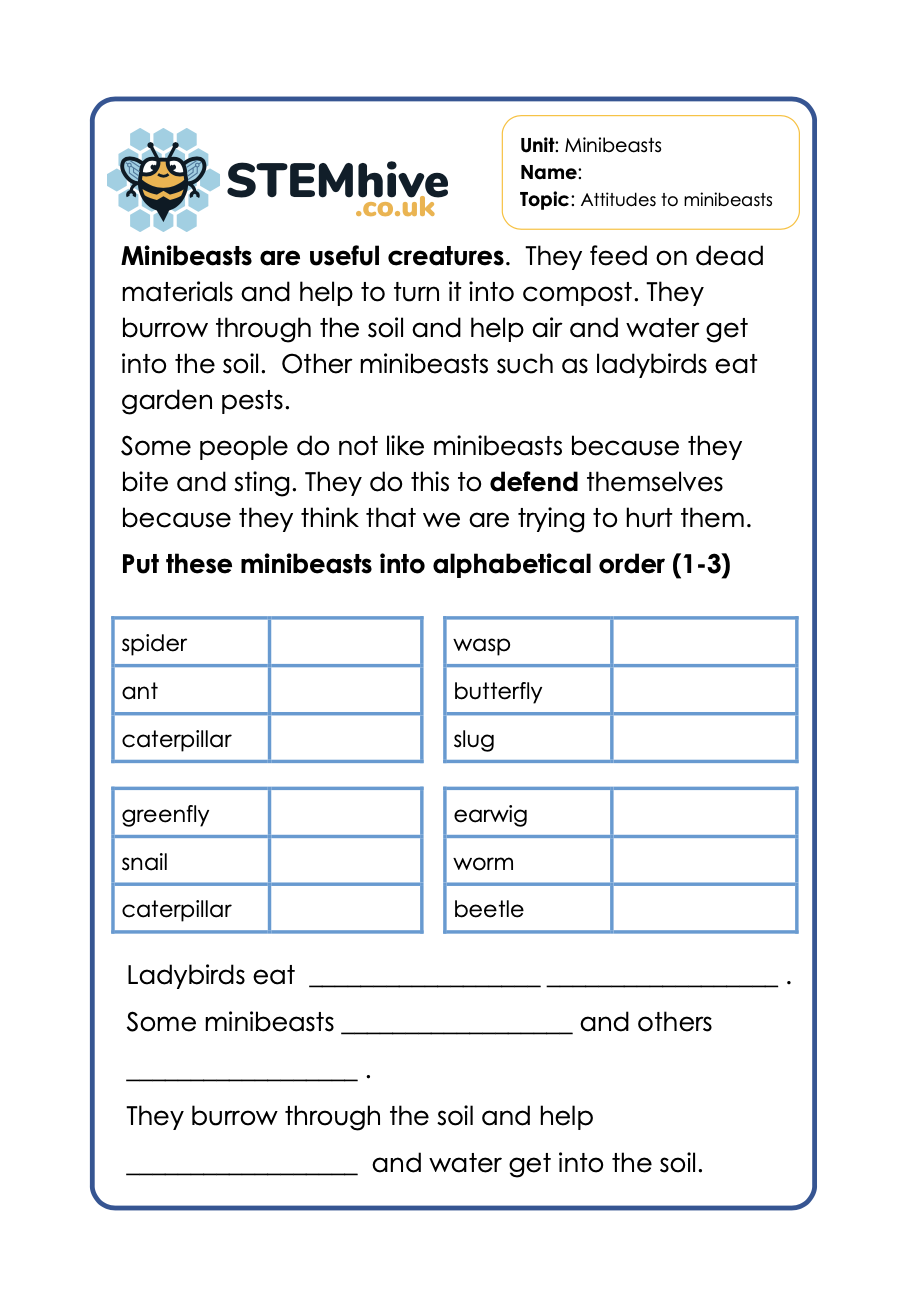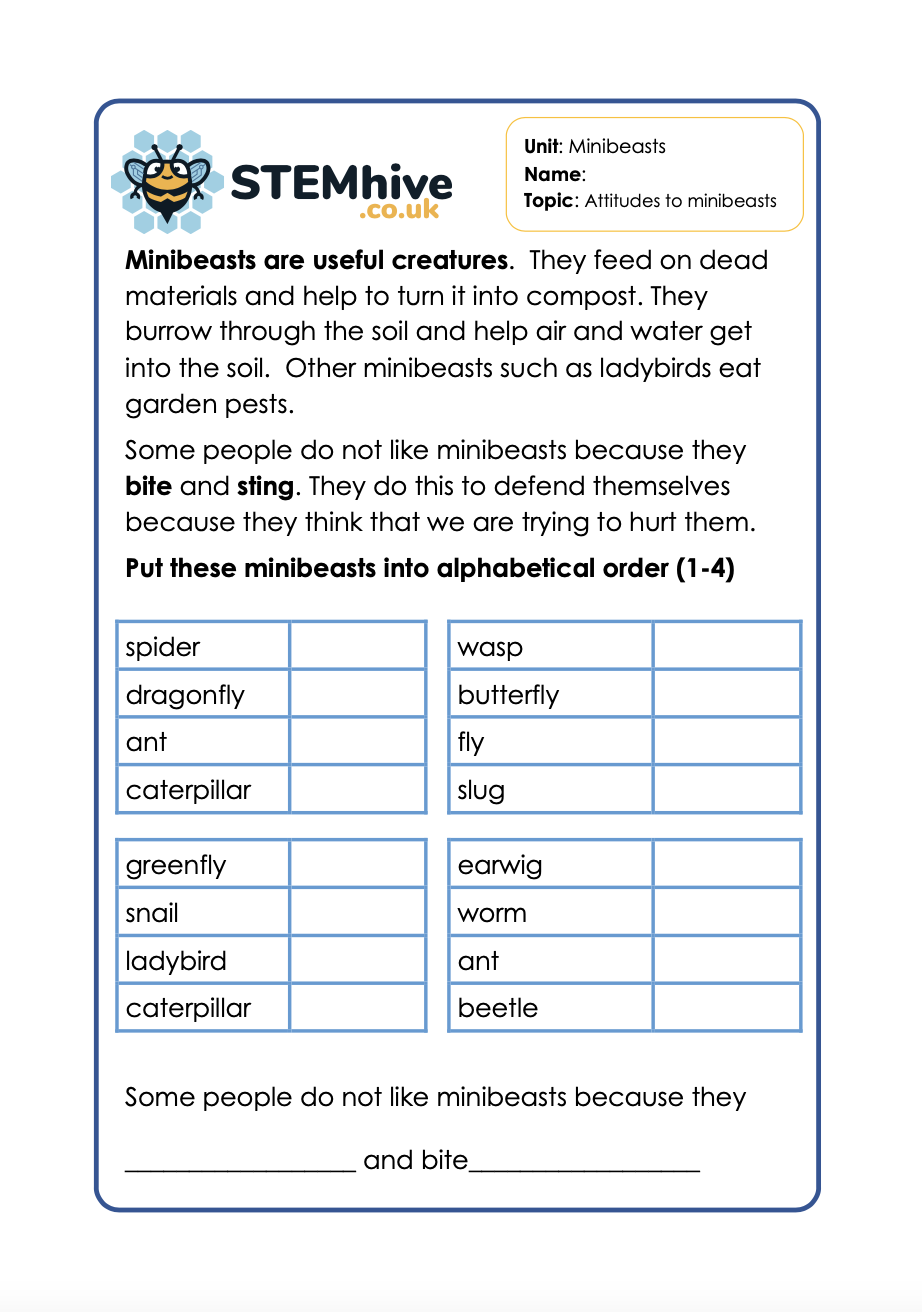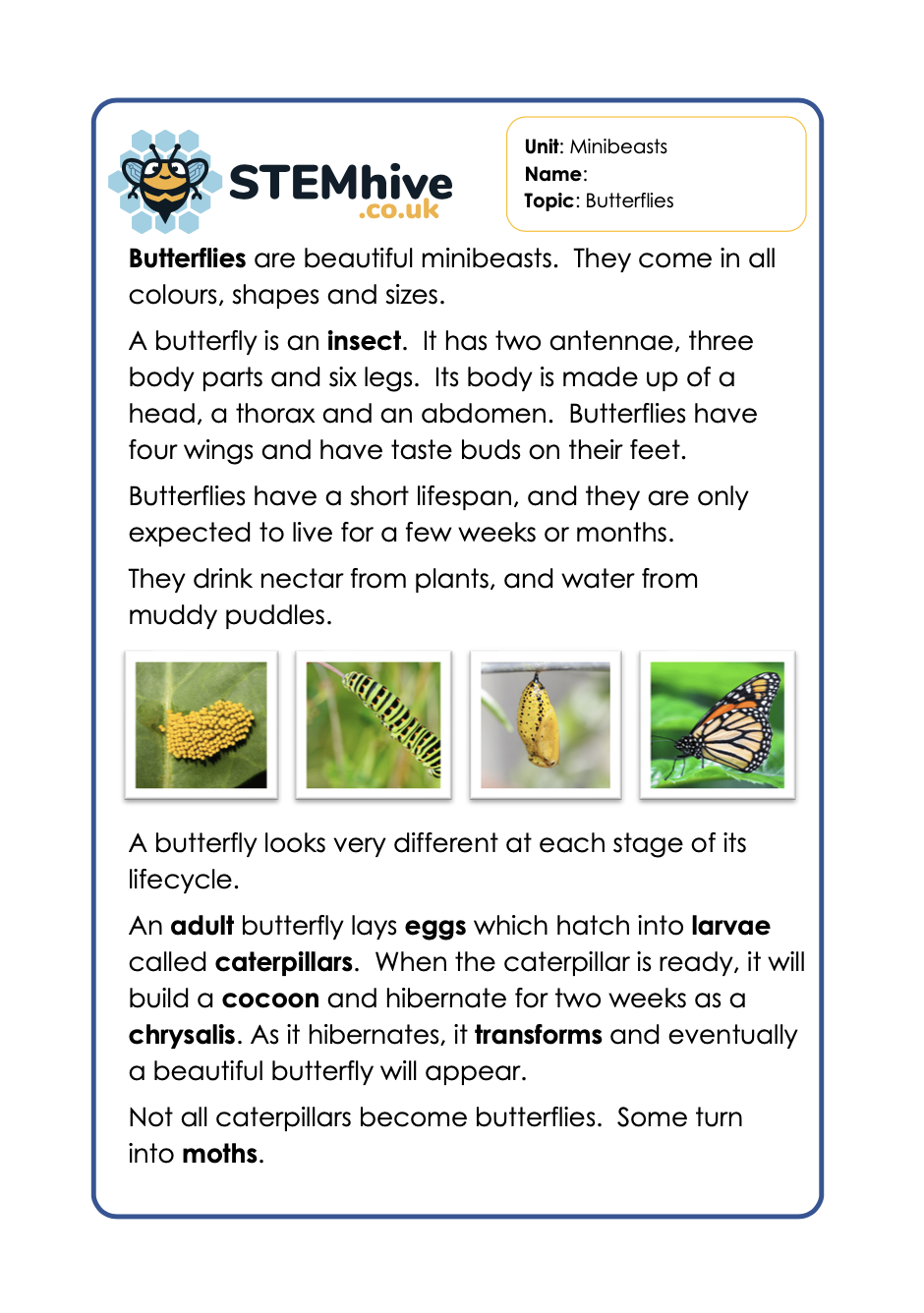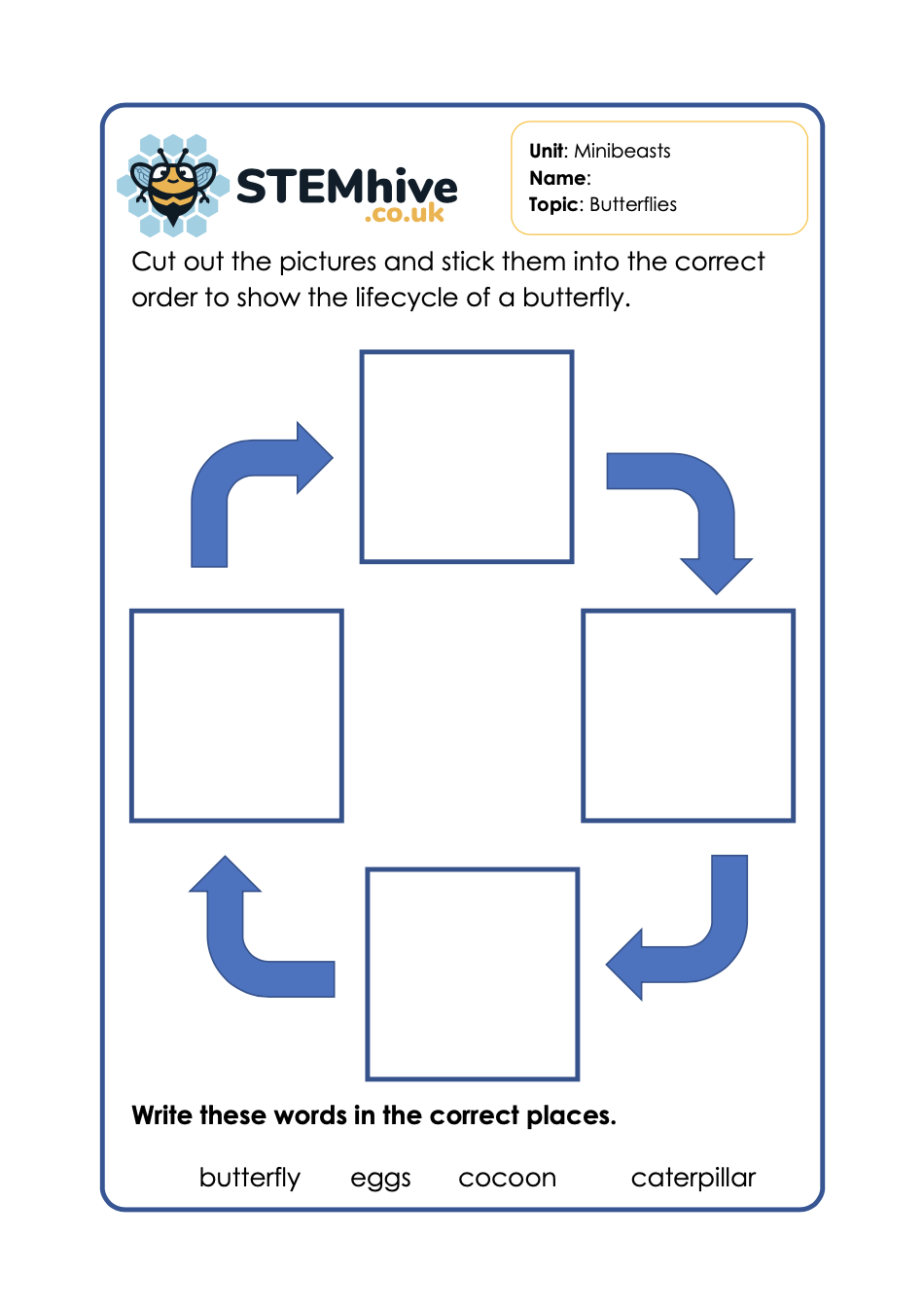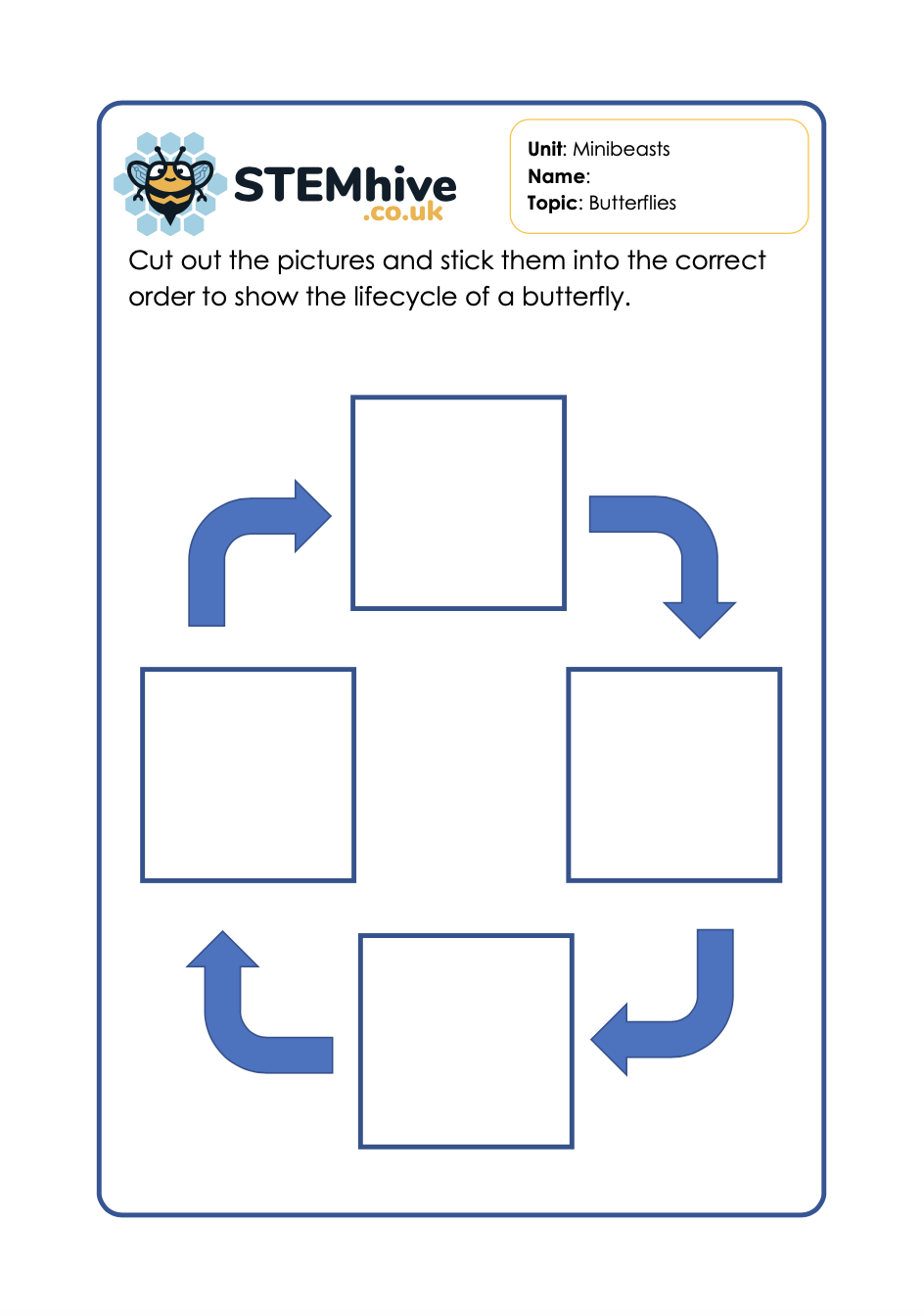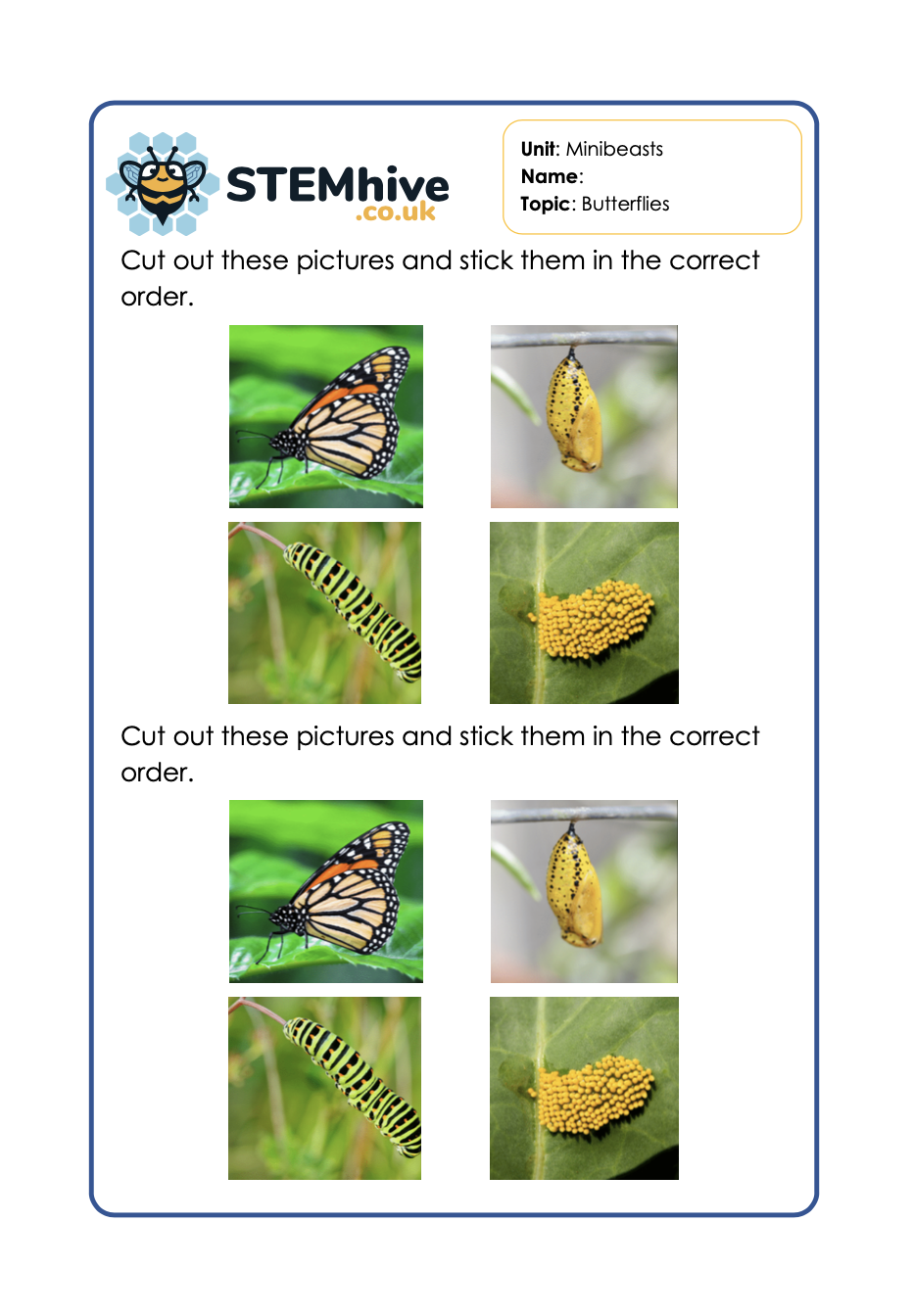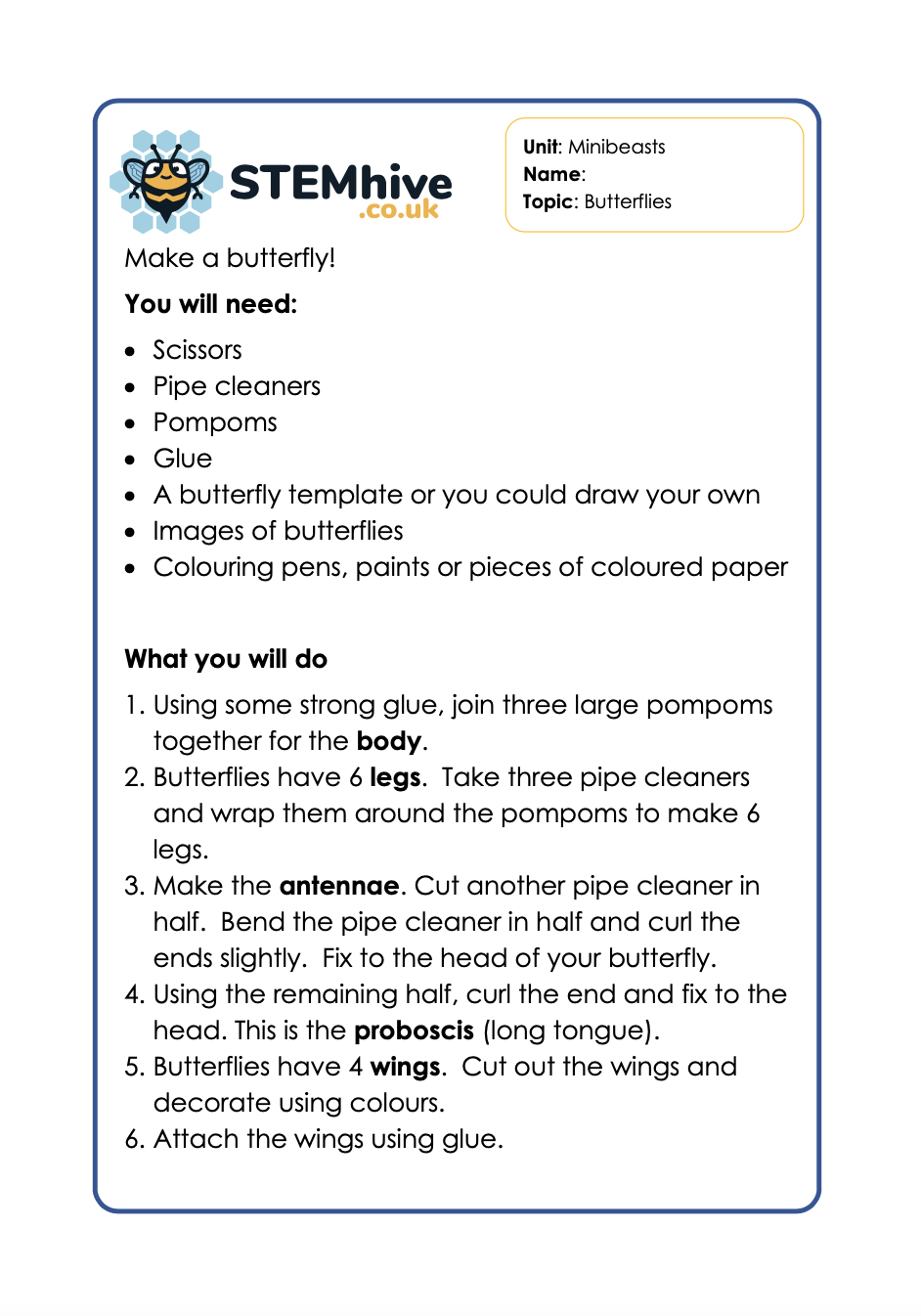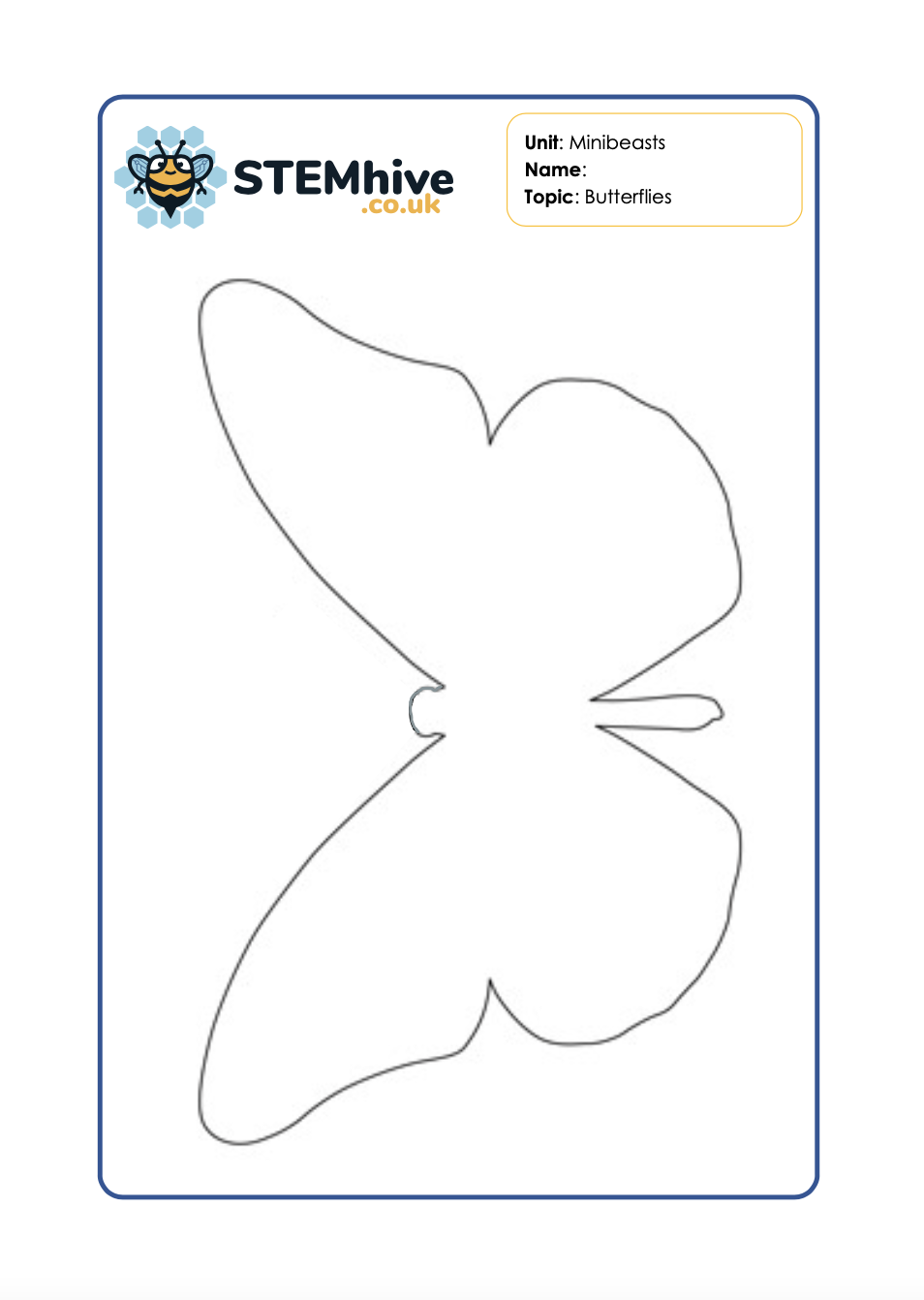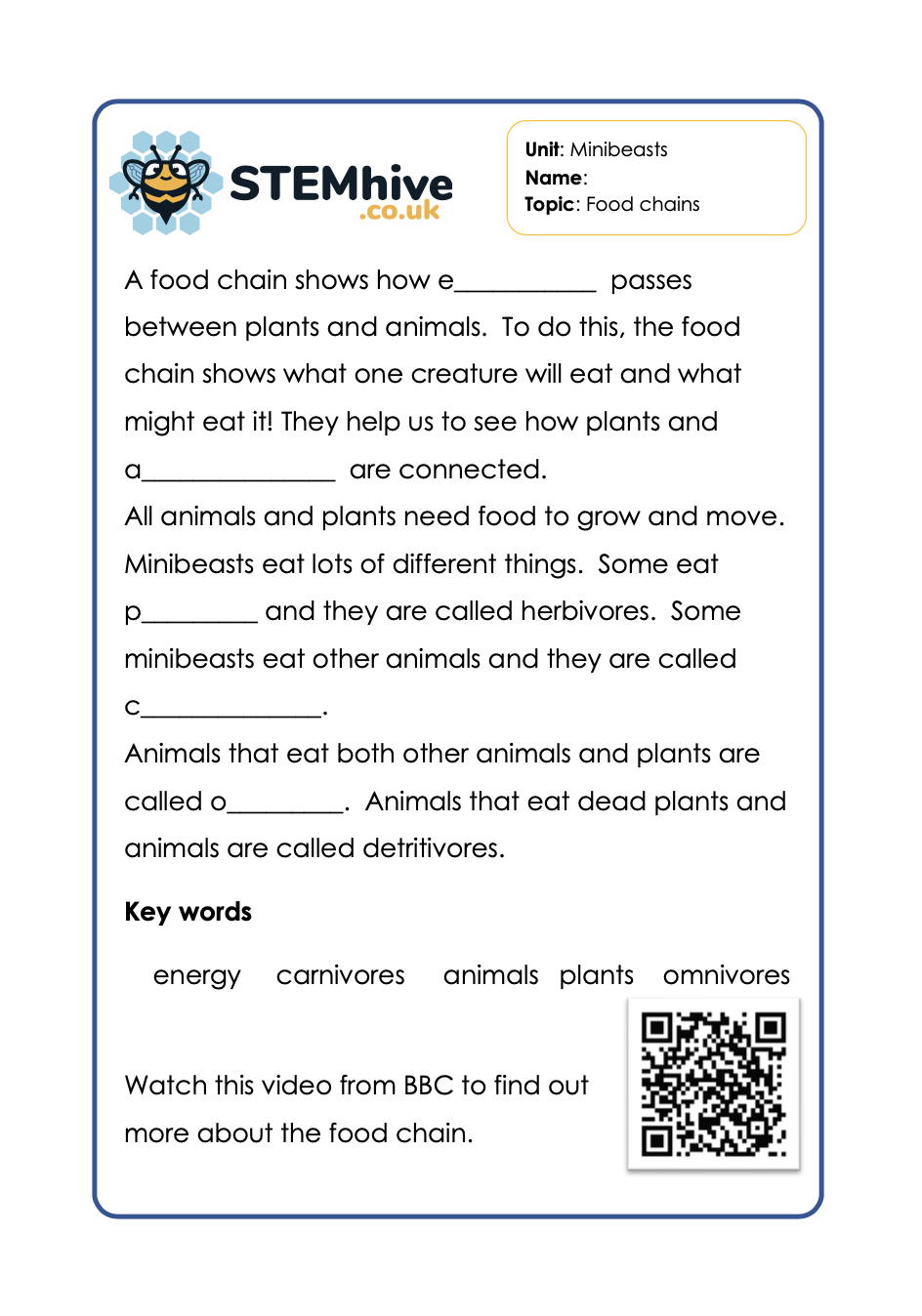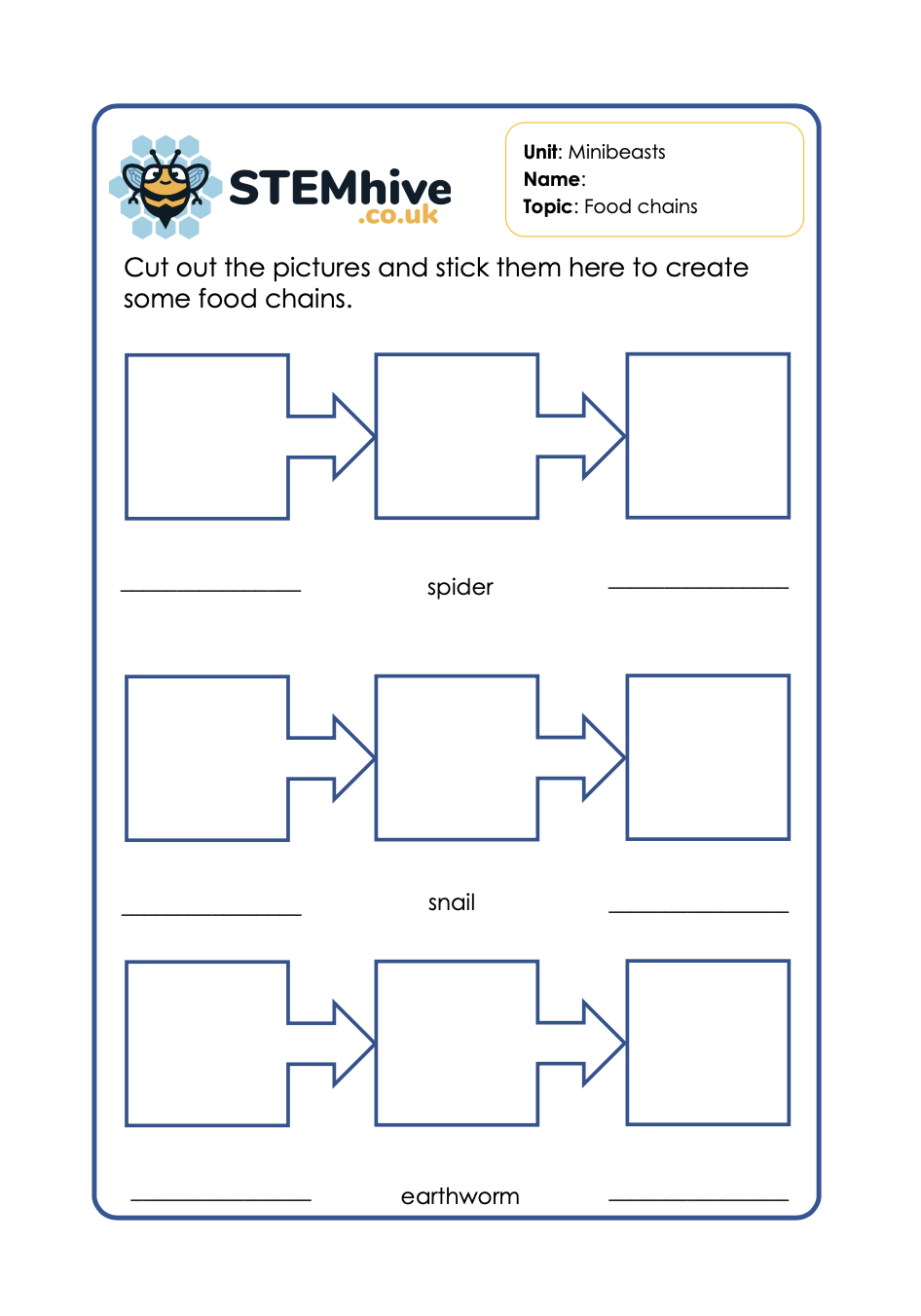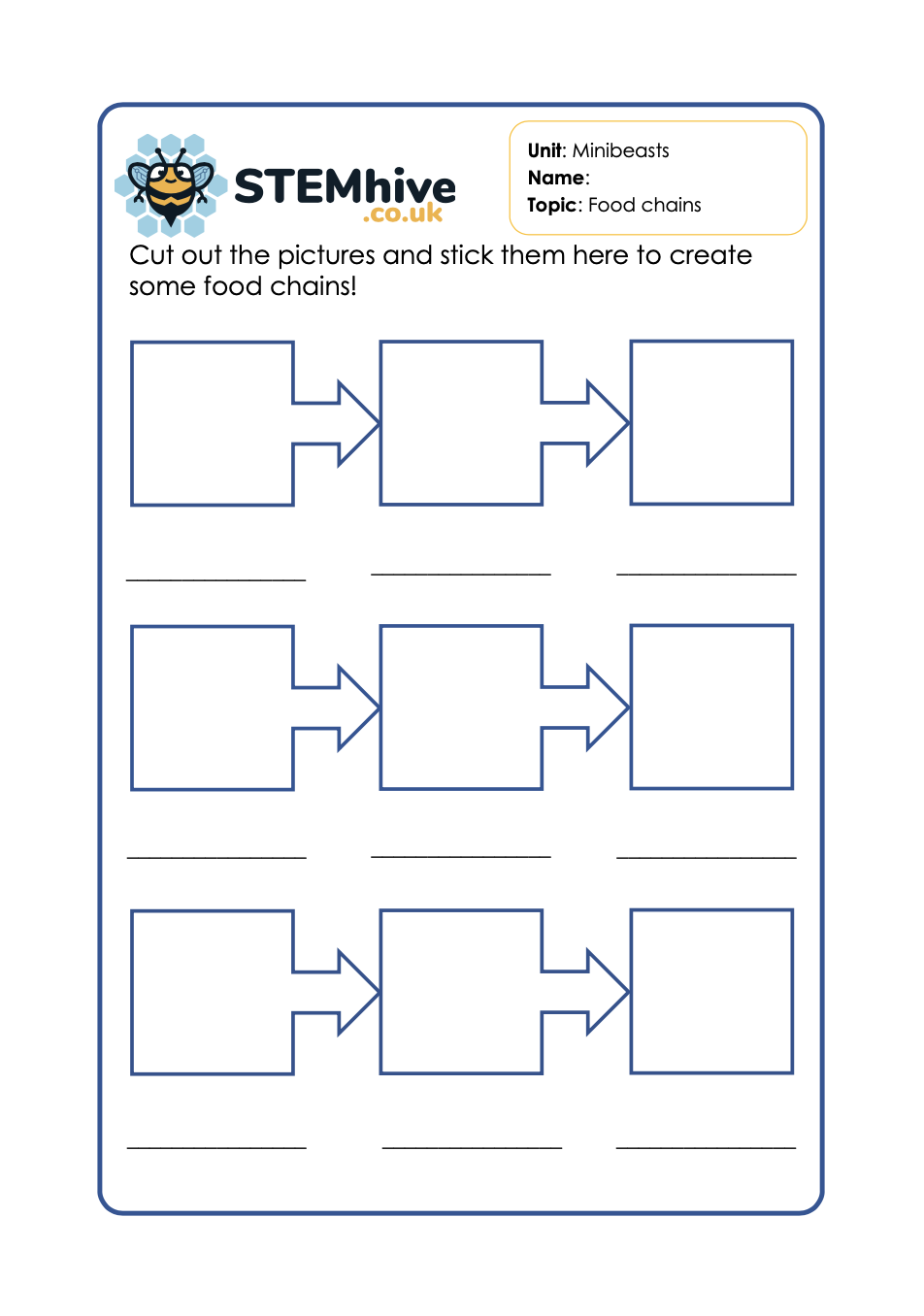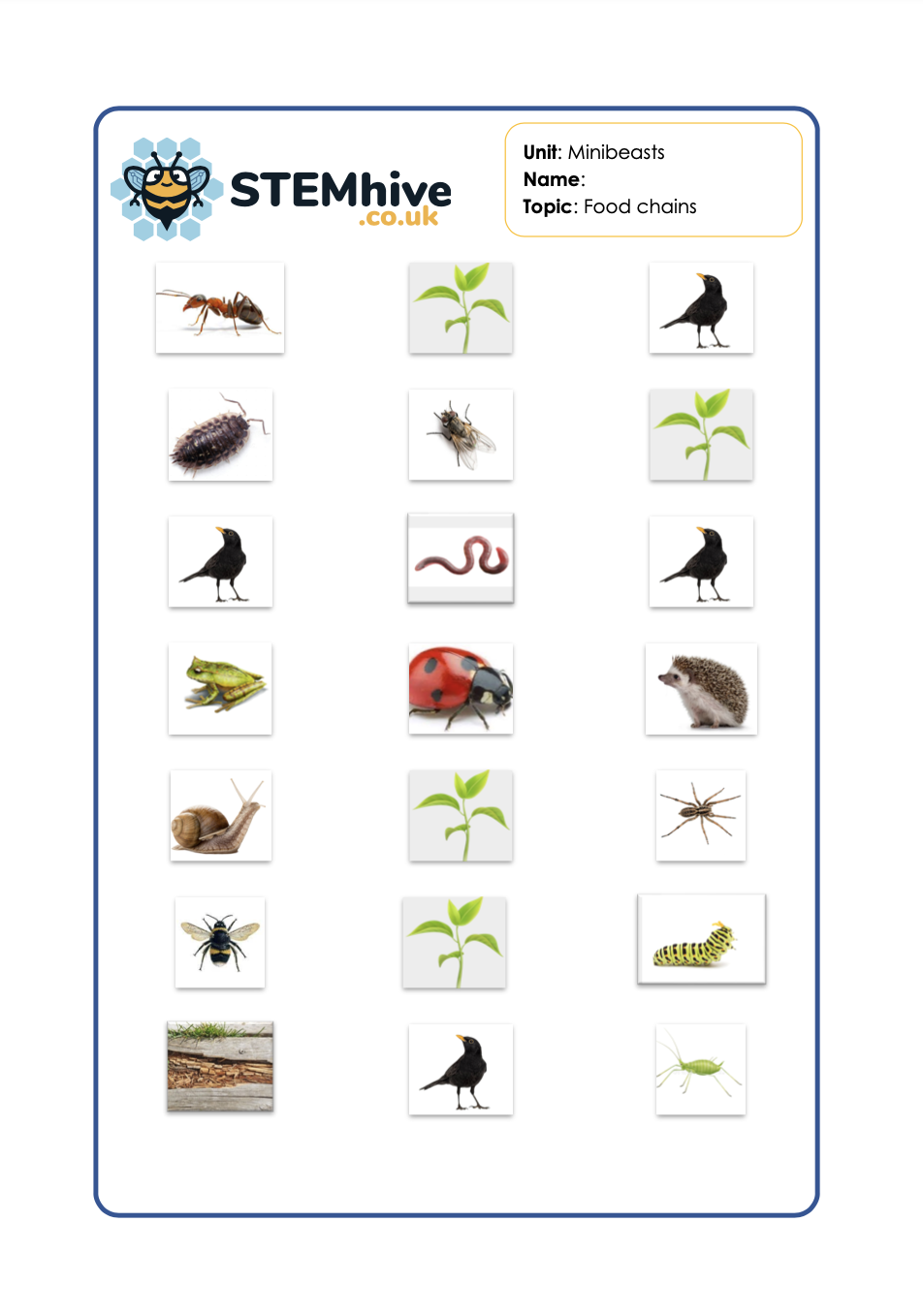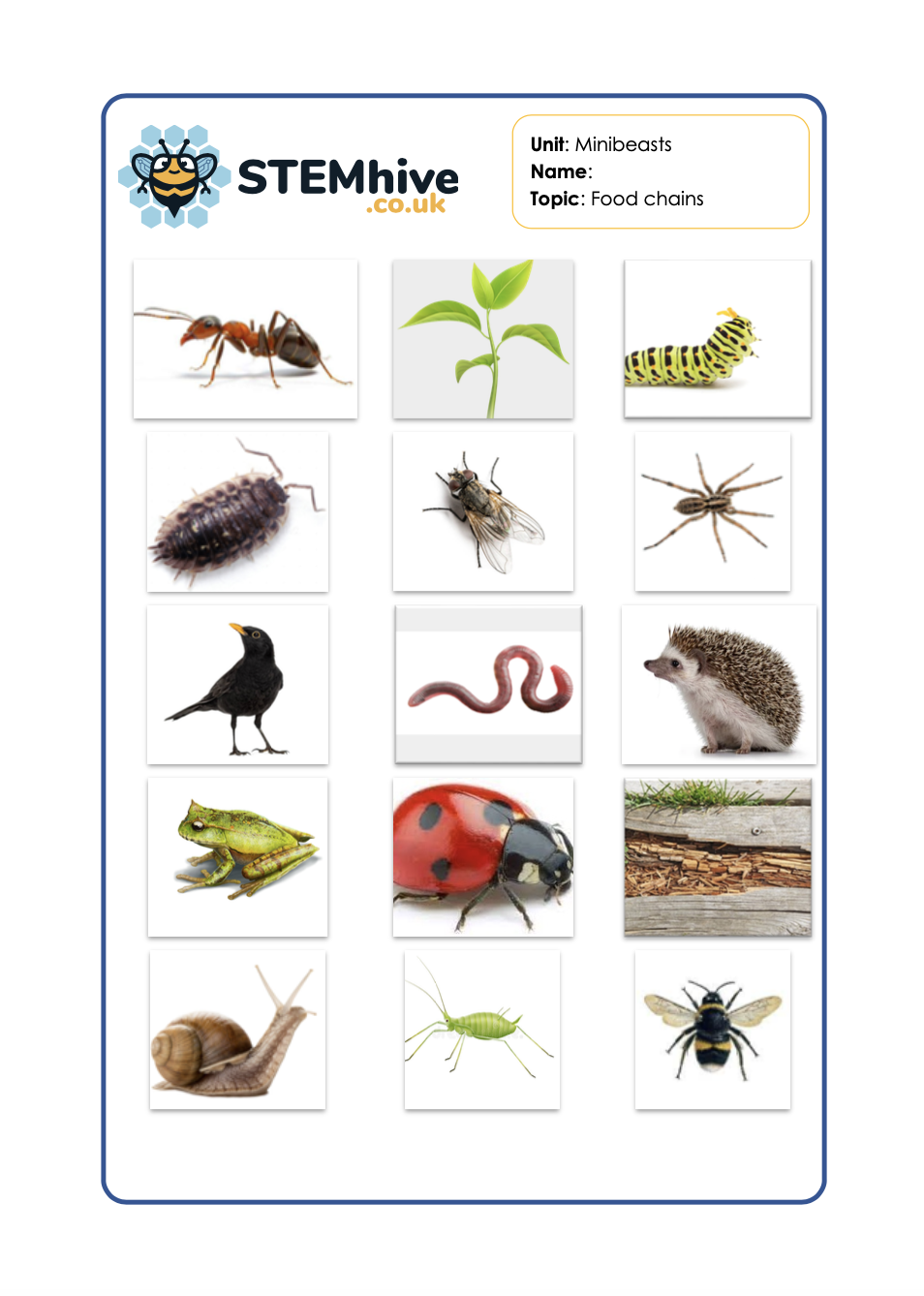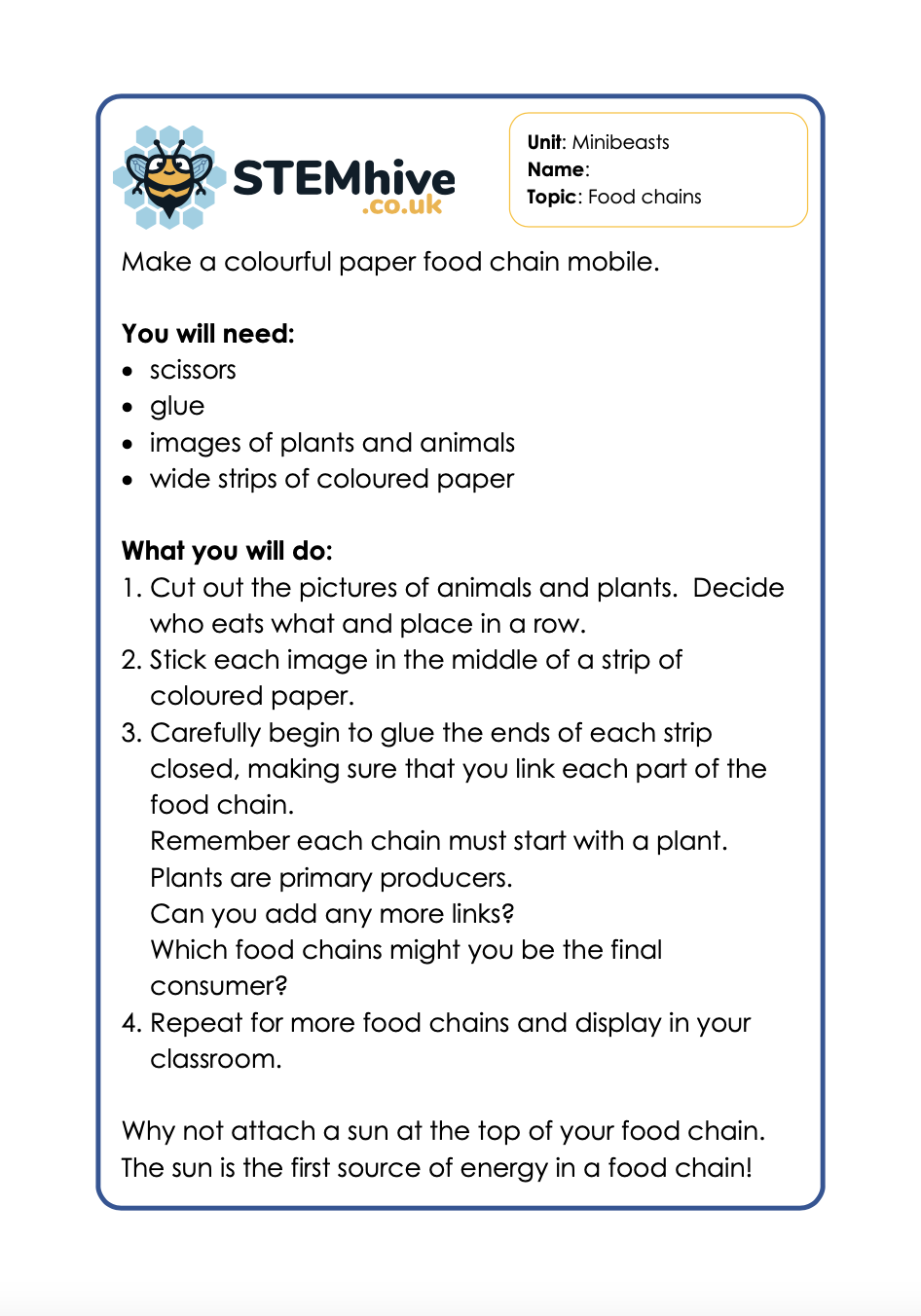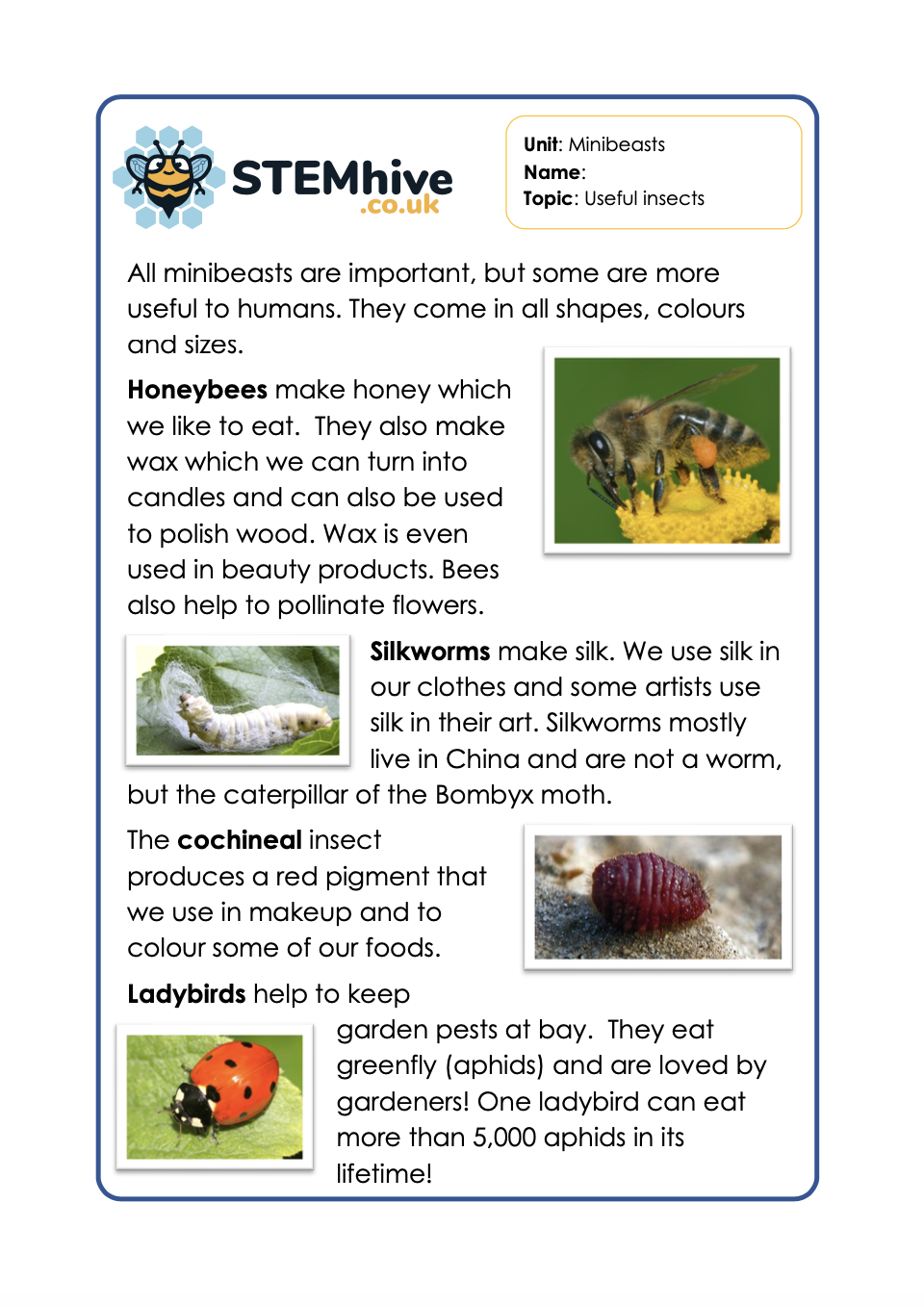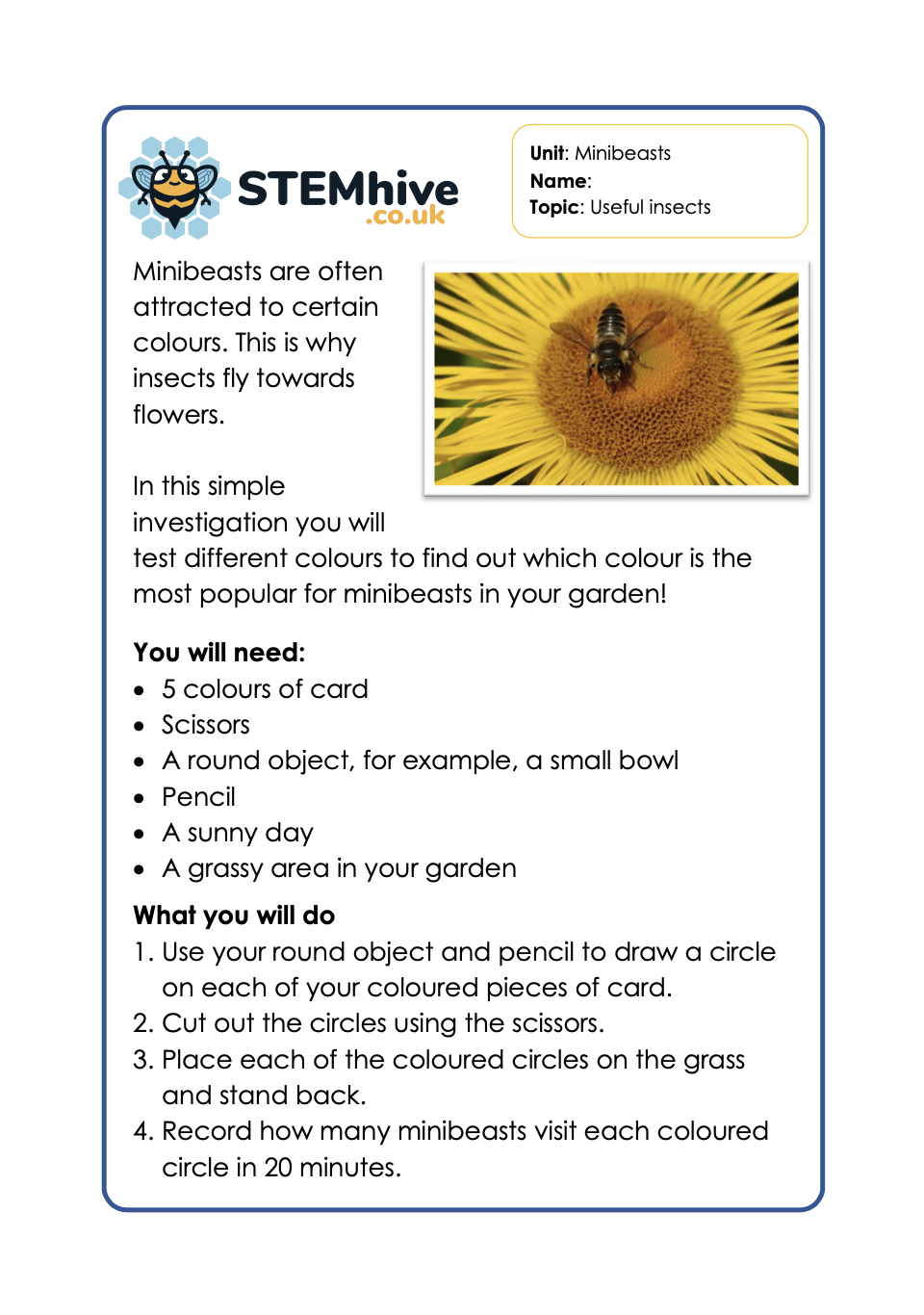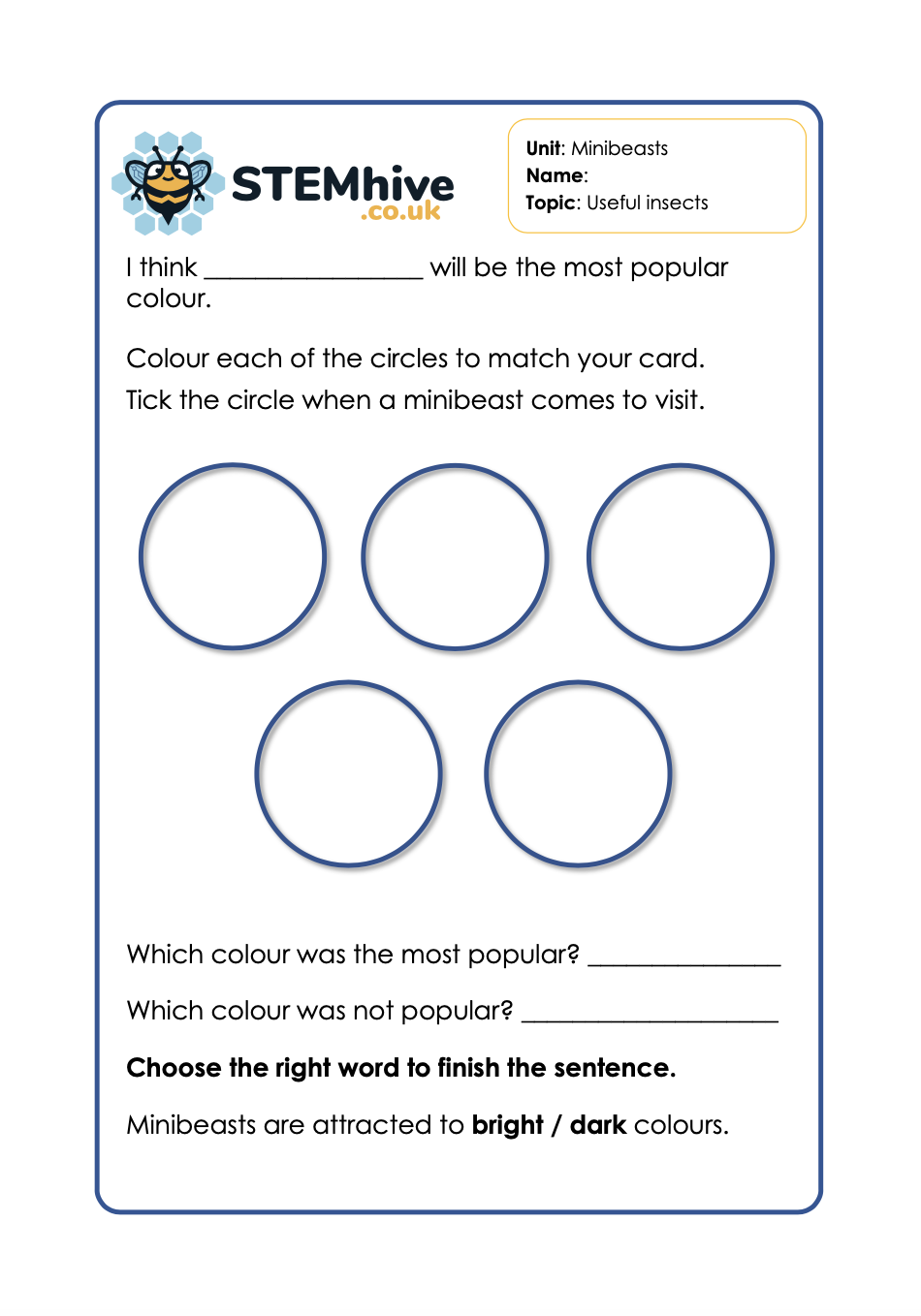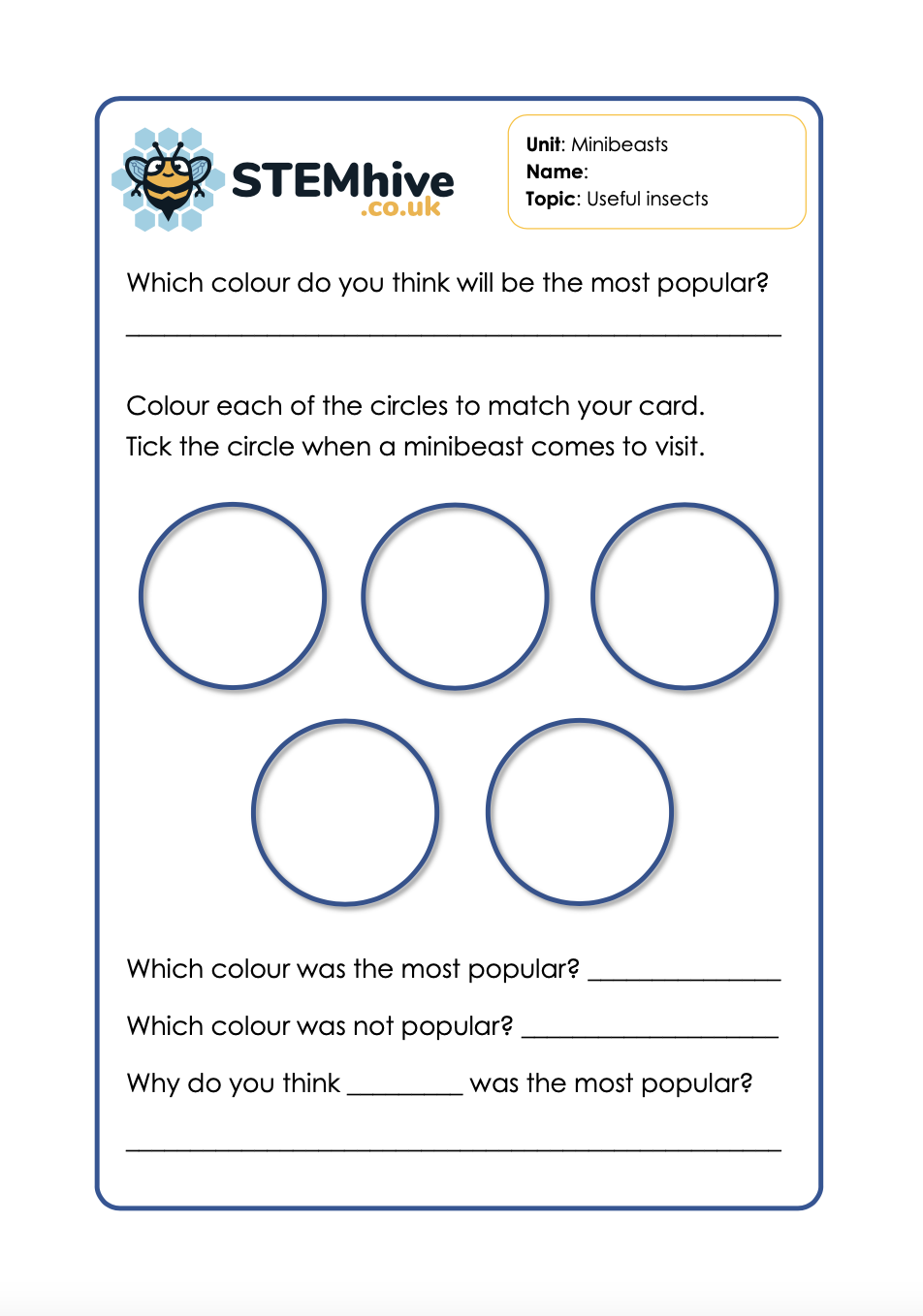Minibeasts
Main Focus: Introduction to Minibeasts
This is a great way to introduce your new topic on minibeasts. Your class will complete the following activities:
- Identifying minibeasts
- Classifying minibeasts on a flow diagram
- Creating rock bugs
- Adding capital letters and full stops to the fact sheet
- identifying minibeasts by their features.
This is a comprehensive resource to begin your topic and will provide your KS1 class with key knowledge to begin the topic.
Unlock ResourceMain Focus: Sorting - Living and Non-living
This is a Science sorting activity whereby your KS1 children must cut out the images and stick them into with Living or Non-living sections.
Your Year 1 / Year 2 class will recognise whether the picture shows something that needs shelter, water, food and air in order to survive, or not.
Unlock Resource
Main Focus: Amazing Ants
This is another brilliant science resource for KS1 that focuses this time on ants. Honestly, some of the things ants can do are truly amazing and your kids will be wowed!
Your class will learn key information about ants, from the parts of their bodies, the colony, their strength and more amazing facts.
For the first part of this STEM resource, your aged 5-7 class will label the parts of the ant.
Next, ‘Have you ever wondered what ants like to eat?’ In this investigation, your class will find the answer by following our step by step instructions.
They will then record their findings on the table provided in the final page of the booklet.
Unlock ResourceMain Focus: Minibeasts and Habitats
Where do minibeasts live?
This printable resource is linked to minibeasts and their habitats. This is another informative aspect of your KS1 minibeast topic because your class will recognise why minibeasts choose particular locations.
We will explore: ants, ladybirds, bees, centipede, millipede, woodlouse, butterflies, snails, spiders and a few others.
Unlock ResourceMain Focus: Snails
Your KS1 class will love learning key information about these slimy little minibeasts.
Snails are invertebrates, which means they don’t have a backbone. Their slimy foot however has some job moving its body and shell around all day – perhaps that’s why they are so slow!
Your Y1 / Y2 class will also learn some information about their physical features, the Giant African Snail and then complete a piece of artwork inspired by Henri Matisse in 1959, called The Snail.
Unlock ResourceMain Focus: Woodlice
Woodlice are minibeasts that are more closely related to crabs and lobsters. You might know them as slaters. They are oval in shape and can be brown, grey or red in colour.
They have a hard and flat body with seven sets of legs and fourteen parts to their bodies! This means that they are not insects!
In this science minibeasts experiment your class will investigate if woodlice prefer:
- Damp or dry conditions
- Light or dark conditions
Main Focus: Attitudes to minibeasts and Alphabetical Order
Minibeasts are useful creatures. They feed on dead materials and help to turn it into compost. They burrow through the soil and help air and water get into the soil. Other minibeasts such as ladybirds eat garden pests.
Some people do not like minibeasts because they bite and sting. They do this to defend themselves because they think that we are trying to hurt them.
Your class will put these minibeasts into alphabetical order (1-4)
Main Focus: Butterflies
Butterflies are beautiful minibeasts. They come in all colours, shapes and sizes.
A butterfly is an insect. It has two antennae, three body parts and six legs. Its body is made up of a head, a thorax and an abdomen. Butterflies have four wings and have taste buds on their feet.
In this science teaching resource pack for Year 1 and Year 2, your class will learn information about butterflies mainly focusing on the life cycle. Your class will also learn the key vocabulary associated with each stage: eggs, larvae, caterpillar, cocoon, chrysalis and butterfly.
Main Focus: Food Chains
This STEM teaching resource is linked to minibeast food chains. Your KS1 class will complete the passage by adding in the appropriate vocabulary, learn about carnivores, herbivores, omnivores and detritivores.
Your class will then create food chains using the images, and finally make a paper ‘food’ chain to display in the classroom.
Unlock ResourceMain Focus: Useful Insects
This resource explores: bees, silkworms, cochineal and ladybirds to show your class how they help us, whether that be to create items, products or to simply keep pests from the gardens.
Minibeasts are often attracted to certain colours. This is why insects fly towards flowers.
In this simple investigation, your class will test different colours to find out which colour is the most popular for minibeasts in thegarden!
You will need:
• 5colours of card
• Scissors
• A round object, for example, a small bowl
• Pencil
• A sunny day
• A grassy area in your garden
What you will do
- Use your round object and pencil to draw a circle on each of your coloured pieces of card.
- Cut out the circles using the scissors.
- Place each of the coloured circles on the grass and stand back.
- Record how many minibeasts visit each colouredcircle in 20 minutes.

